Funny How to Make a Trap Hip Hop Beat
Want to learn how to make trap music, but feel left in the dark? Don't know the steps to getting your beats to hit hard?
It sounds like you need a proper step-by-step framework.
You've come to the right place. This guide will step you through the entire production process of a trap song, from start to finish. You'll learn:
- How to get those tight, snappy drums
- The best ways to get your 808 to cut through the mix
- Creative layering techniques for melodic layers
- Why creating magic moments helps your track to not be boring
- + more!
So no matter what DAW you're using (Ableton Live, FL Studio, Logic Pro X), let's start with the basics! 👇
Get the headstart you need in music production with our Trap Starter Kit
- Have the best synth sounds on hand with high-quality Serum presets
- Craft drums effortlessly with 50+ trap drums and FX samples
- Get all the info from this guide in a one-page trap production cheat sheet
Table of contents
- Step 1: Tight Drums
- Step 2: Banging 808
- Step 3: Hype Melodies & Synths
- Step 4: Sprinkle The FX
- Step 5: Create Energy
- Step 6: Magic Moments
- Step 7: Final Polishes
A Few Disclaimers on Trap Music
Before we get straight into how to make trap music, let me clarify a few things about this guide.
What style of trap music?
To different people, the genre 'trap music' means different things.
In this build, we'll focus on how to make the more energetic and aggressive side of trap music (e.g. Trap Nation). We'll be using banging 808s, snappy drums, and roaring basses.
In fact, here's the final result of what we'll be making:
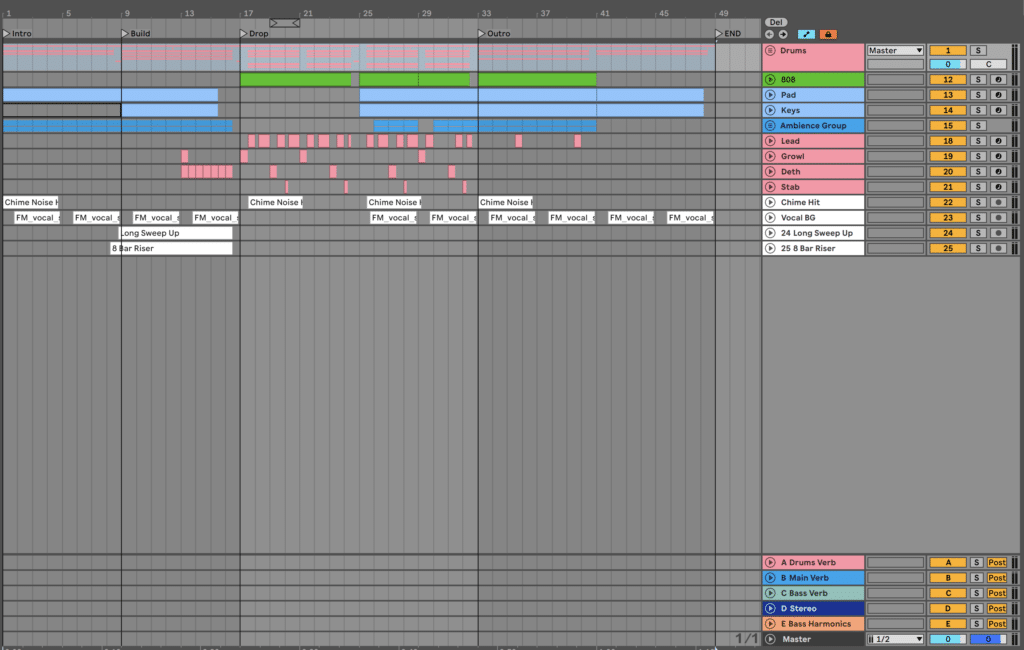
If you're looking how to make classic trap beats (like Migos, Future & Metro Boomin), then don't click away yet. Everything in this article still applies, but you might want to skip over the part where we add basses to the drop.
Even then, you might learn a thing or two that you can apply creatively in your own production.
How in-depth is this?
I'll be honest – this guide is extremely detailed.
Not only will you learn how to write basic drum patterns and 808 lines, but we dive deep into the little details, such as:
- changing up your drum patterns in the build
- adding FX hits to create background tension
- alternating and modulating different bass sounds
This guide does skip over a few elements of the process by necessity (it's not a full arrangement). But you'll learn enough to be able to apply these techniques to your own music.
Anyway, on to the 'how to make trap music' guide!
Note: wanting to learn general EDM production? Check out our massive guide – How To Make Electronic Music.
Step 1: Tight Drums
Drums are the most fundamental element in making trap music, along with the 808. So it's important to get them right.
Choosing the right tempo and samples
One key with trap drums is to not overcomplicate them. Use a few, high-quality samples and simple rhythms.
But first, you'll want to set up your project properly. So let's set the BPM to 160.
160BPM is a great tempo for making faster-paced, energetic trap. But most trap falls between 140BPM and 160BPM.
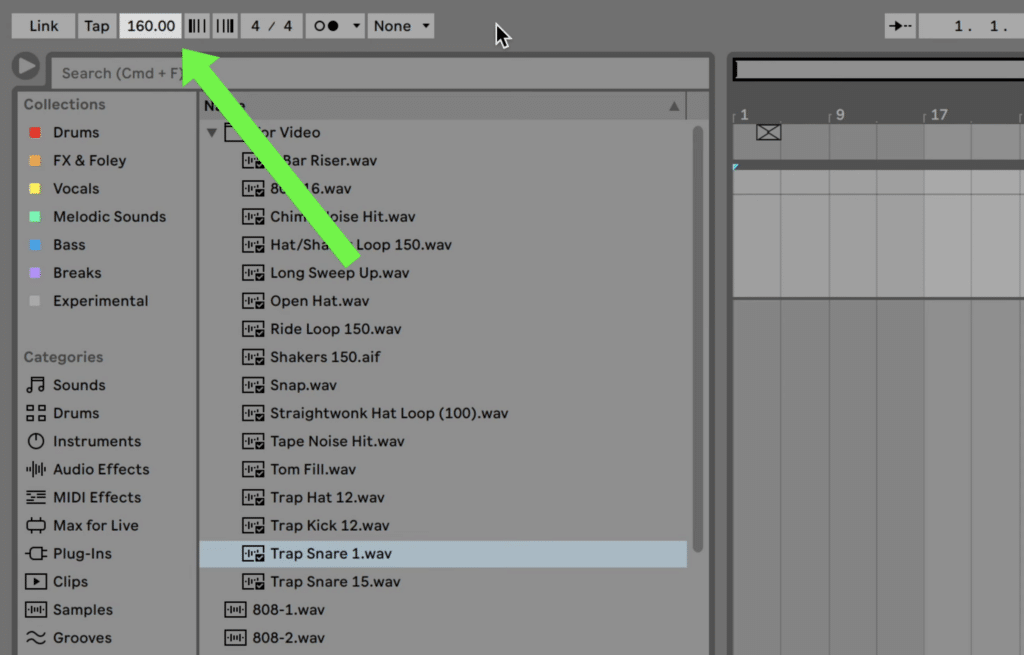
Once you've done this, you'll want to add in some sort of drum sampler. In Ableton Live, I'm going to use the Drum Rack, which allows you to add in different drum samples.
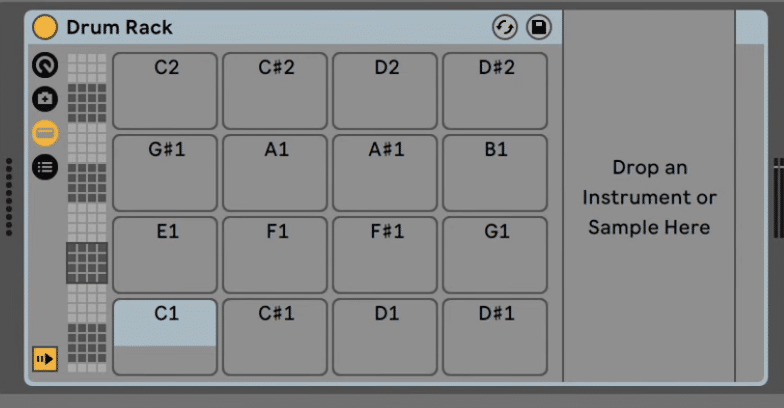
After your sampler is ready to go, you'll want to find a good kick, snare, and hi-hat to load up.
Here are a few criteria I use to choose the best samples:
- Kick: punchy yet has a solid weight to it
- Snare: short and punchy, with a high, snappy pitch (an 808 drum machine snare is traditional)
- Hi-hat: short and snappy, something you can play very fast (808 drum machine hat)
For this track, I've selected three samples from the Trap Starter Kit:
Simply drag them in from your DAW's browser into the drum rack. I used the notes C1, C#1, and D1.
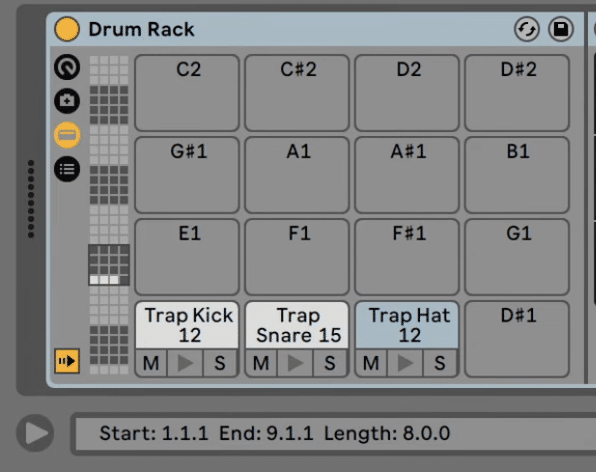
Note: you'll want to adjust the start time on the Snare sample, as it's technically a loop. Adjust it in Simpler like so.

Now you can start to program a simple drum loop to get a beat down. Let's create an 8 bar MIDI clip and start to fill it out.
A Basic Trap Drum Pattern
Trap music uses a 'halftime' drum pattern, usually with a kick on beat 1 and a snare on beat 3 in its simplest form.
We'll start it off with some hi-hats going off every 1/8 note, creating consistent energy in our drums.

Once again, let's keep it simple. I'll put a snare on the 1.3 and 2.3, and duplicate them over for the second lot of 4 bars:
Then I'll put a kick on the 1, and give it an off-beat groove before the second snare on beat 2.2. This is a common technique in trap music, borrowed from classic hip-hop:
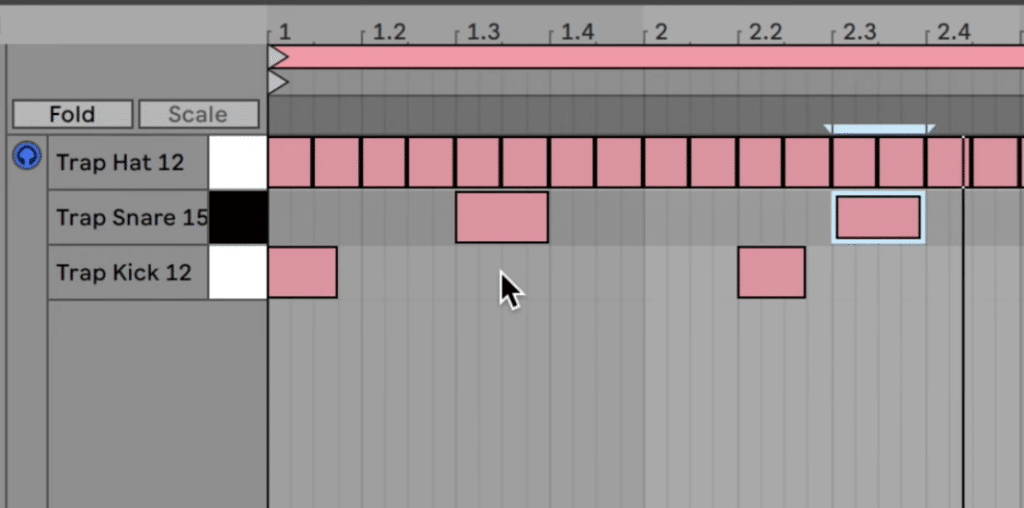
This is what we get from these 3 simple drum sounds:
You may already see how this drum pattern forms the backbone of our track – much like this track here when the drums come in:
Spicing Your Drums Up
Honestly, it would be fine to leave it pretty much like this.
But at this point, you can add little bits of variation to spice up the drum loop. Here are a few things I like to do:
- Add some 16th note fills on the hi-hat towards the end of a bar
- Add some extra kicks here and there (e.g. double kick on beat 1)
- Bring in another snare sample to create some off beat groove
- Remove some of the hits to create tension at different points
- Adding a clap or snap sample to layer with certain snare hits
- Create a reverse snare sweep from the tail into the snare
- Add chant samples of the off-beat
In this track, I did all these (except the chants) to show you the power of little changes adding up. Here's where I got to:
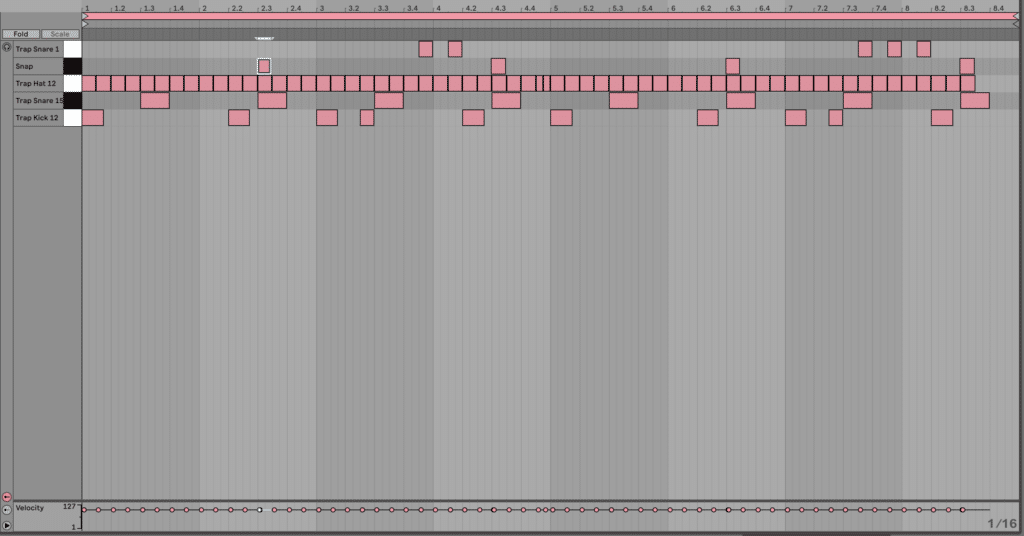
The reverse snare:
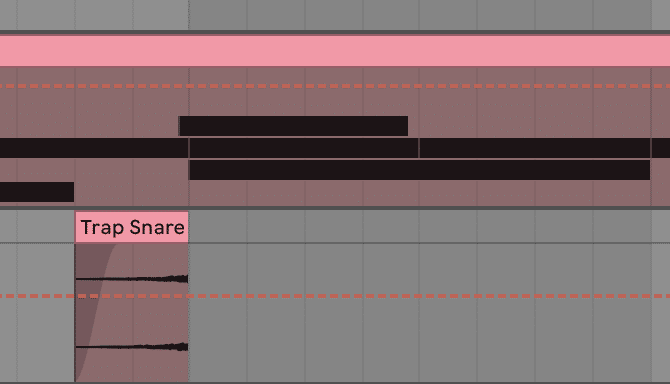
Now this drum loop has some heat! 🔥
Recommended: The Ultimate Guide To Drum Programming
Layering In Textured Drum Loops
Let's take it even further by layering in some loops. This will give our drum arrangement a lively and textured sound, rather than a stale set of one-shots.
I'm going to bring in the Shakers 150 sample onto its own audio track.
Make sure it stretches to the BPM of the project – I use the Repitch warp mode in Ableton Live for this.
Simply loop it across the whole pattern and adjust the volume to taste.
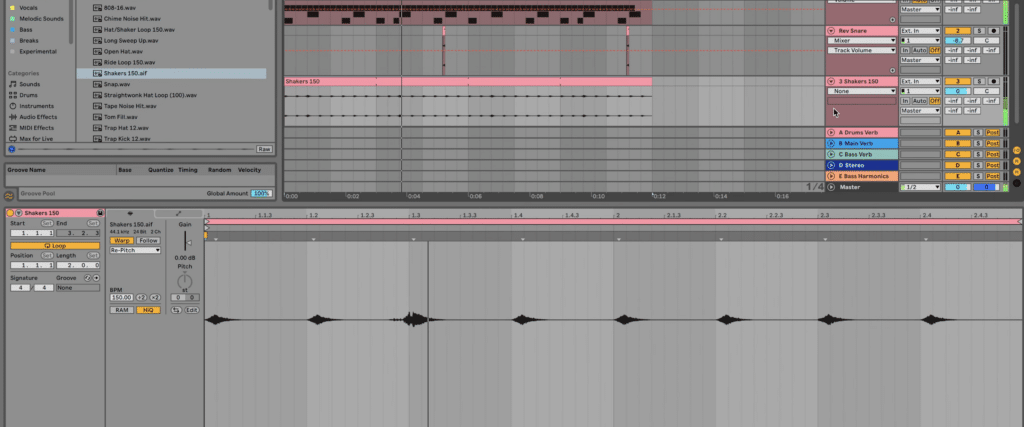
You can also do some more creative loop mangling to add your own flair to your drums and help them stand out. In this example, I pulled in the Straightwonk Hat Loop (100) sample and warped it in time.
Ableton Live has a variety of sick warping modes that you can use to mangle sound in different ways. This time, I used the Texture warp mode with the following settings:
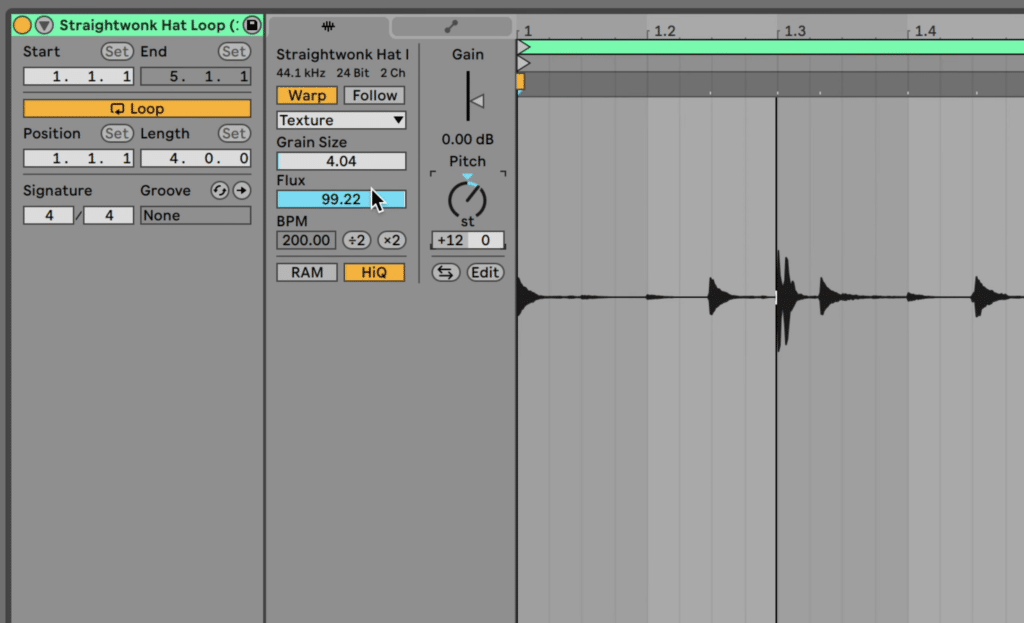
Notice that the loop is also transposed up an octave (+12st), giving it a grainy feel.
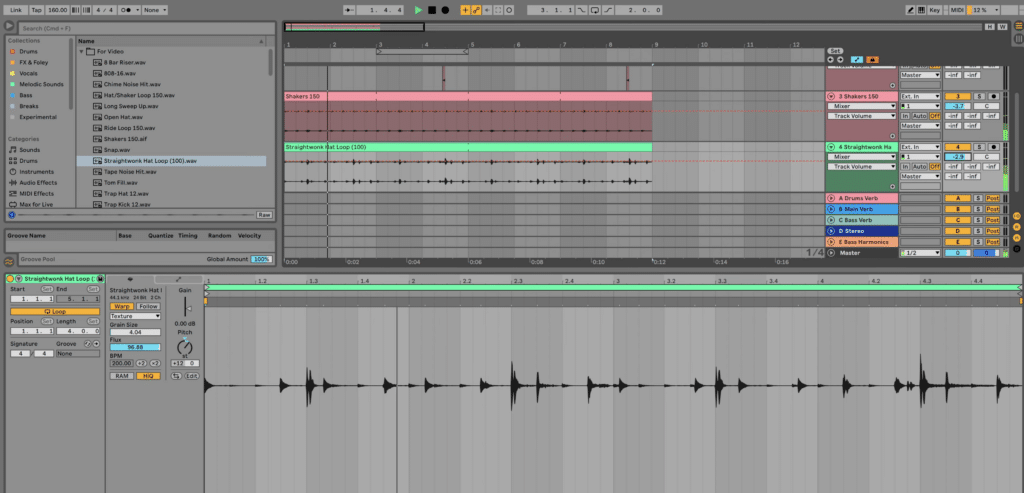
Lastly, I'm going to bring in the Hat/Shaker Loop 150 and use the Repitch warp mode again. This one requires a bit of high-pass filtering to get the low-end noise out – 800Hz is a good cutoff frequency.
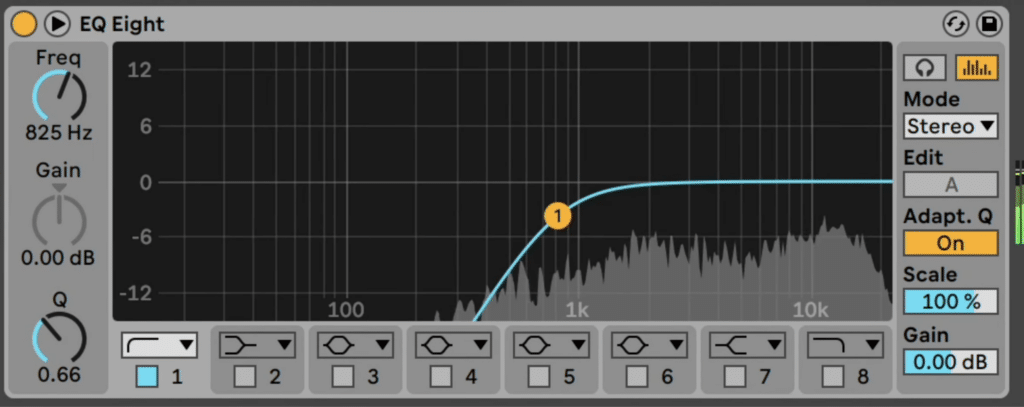
Once these three loops are blended in, duplicate the 8 bar loop twice and you get this result:
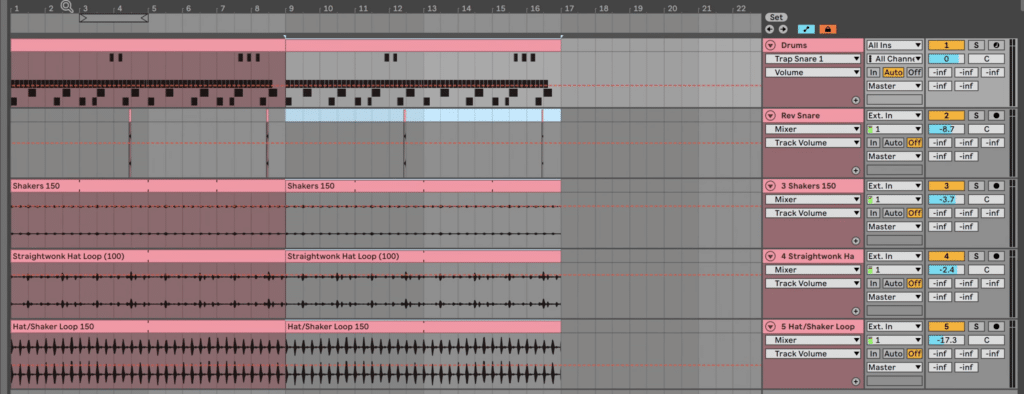
This is a full-sounding drum loop to start off with. Now we can add some 808s in to make that low-end shake.
Get the headstart you need in music production with our Trap Starter Kit
- Have the best synth sounds on hand with high-quality Serum presets
- Craft drums effortlessly with 50+ trap drums and FX samples
- Get all the info from this guide in a one-page trap production cheat sheet
Step 2: Banging 808
Once you start learning about how to make trap music, you'll come across the concept of 808s.
808s are long bass sounds, traditionally taken from the kick drum of a Roland TR-808 drum machine.
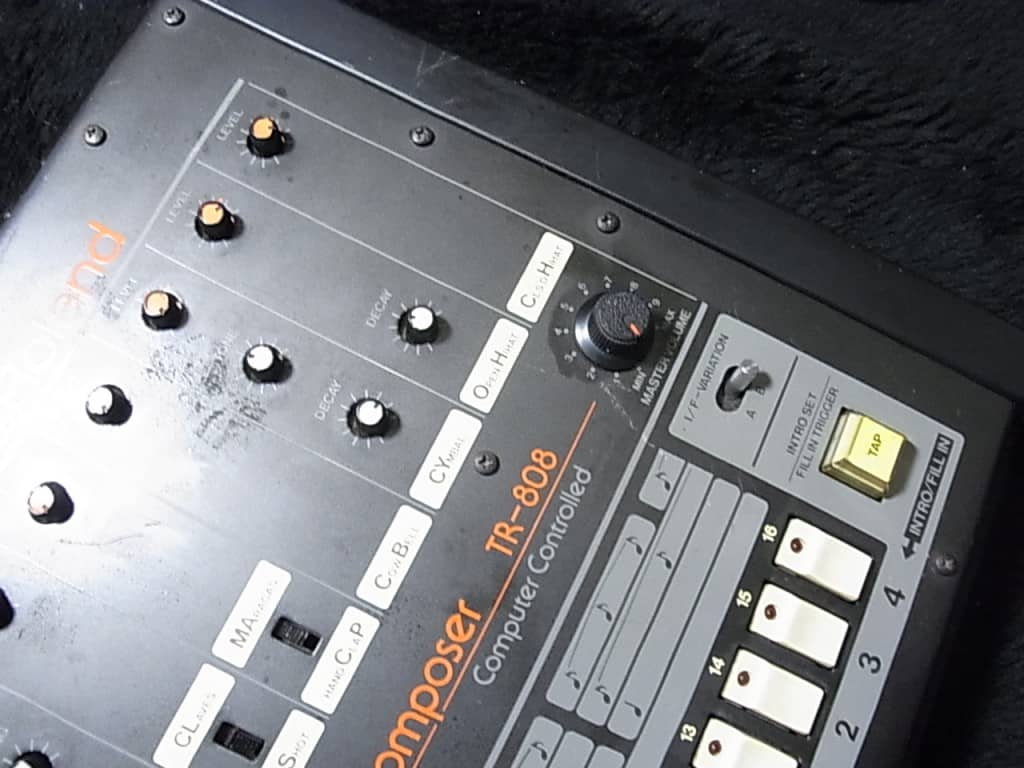
When it comes to modern 808s for trap, you can either make your own in a synth or use a good-quality sample. There are literally thousands of great options out there.
In this guide, I'll be using a sample. But if you're wanting to make your own from scratch, check out our Breakthrough Sound Design course.
From the Trap Starter Kit, I use the 808-16 sample and bring it into a sampler channel (Ableton's Simpler is perfect for this).

Tuning your 808 sample
Make sure it's in key with your notes by using some sort of tuner device (or if you're blessed with perfect pitch, your ear). Doing so will allow you to program notes in the right key.
I'm going to play a C on my MIDI keyboard and tweak the pitch controls until we get it hitting an actual C.
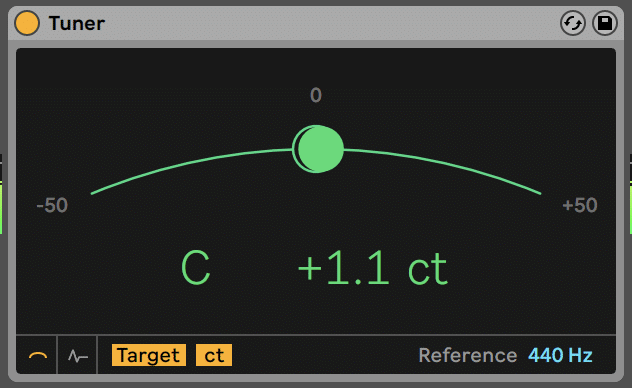
Now we can program in an 808 pattern in the correct key. For this track, we're going to pick F# Minor. It has the ideal note range for 808s cutting through on big systems (along with F and G Minor).
Making a solid 808 line
Let's add a new MIDI clip and start by aligning our 808 to the basic kick pattern from the last section. Don't worry about the notes yet, let's just use an F#:
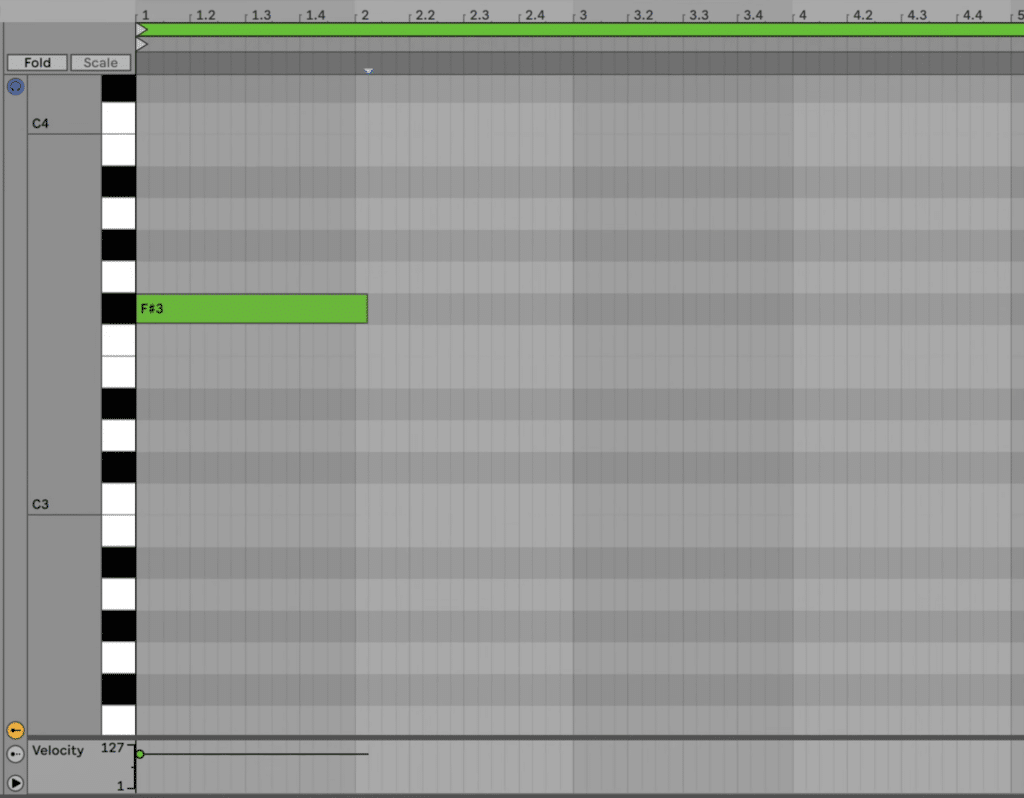
Make sure your note pitch is in the right octave. If it's too low, it will sound muddy, and if it's too high, it won't feel weighty enough.
Now let's add an extra note after the second kick, creating a bit of extra bass motion. Not every 808 hit has to align with a kick, but it helps if most of them do.
Now let's start to add a bit of melody to the notes. I'm going to bring the second 808 up to the A (aligning with the kick), and the extra hit we just added to a G#. This creates a cool scale-descending effect.
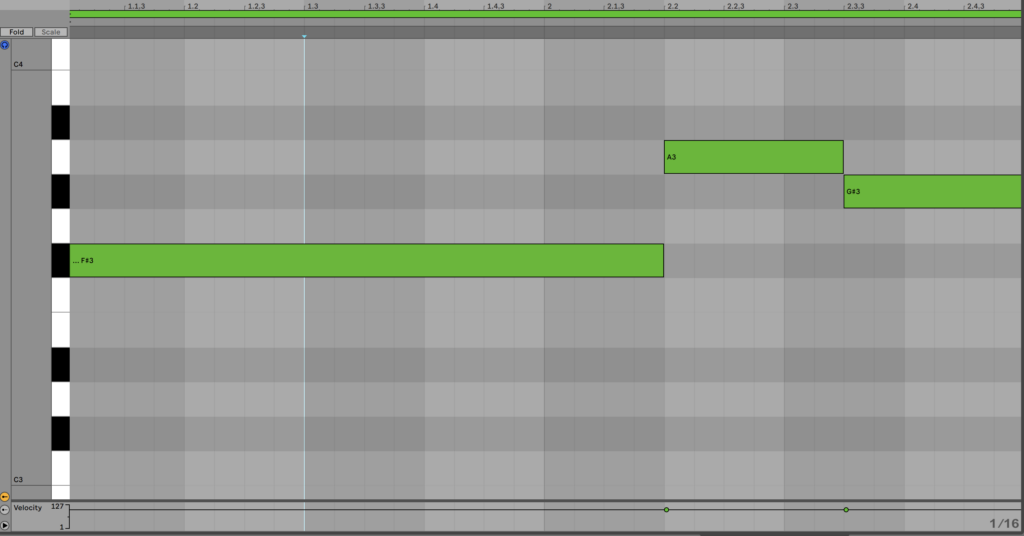
Copy this across for the whole 8 bars, and you'll get this result.

Making 808 loop variations
These more consistent 808 patterns are great for the drop, where the focus is less on the bass notes and more on the sound design.
But for the intro and outro, I want to create a more musical variation. So let's copy the clip over to the second 8 bars and create a second version.
This time, we'll make the notes that hit on the first beat of each 2 bars descend in key for the first 3 phrases. and then come back up on the last phrase. We'll leave the other notes as they are.

Next, let's adjust the volume to taste and sidechain the 808 to the kick. This ensures that there are no low-end clashes.
Drop in your favorite sidechain device and tweak it to taste. I didn't need intense sidechain compression in this track, so I used Ableton Live's Compressor in sidechain mode with the following settings:
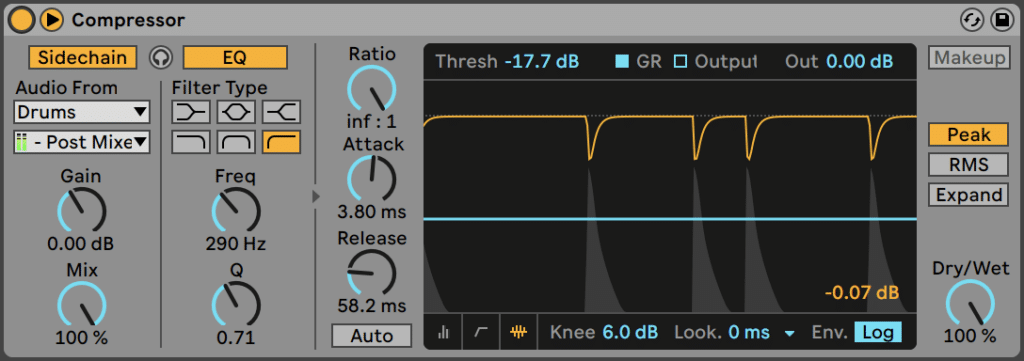
Adding 808 Grit
Lastly, I want to give the 808 a bit more grit to help it cut through on smaller speakers. 808s typically have a lot of sub frequencies and fewer upper harmonics. So adding some distortion can help solve this problem.
Here's an example of a track that has a low 808 that still punches through on smaller speakers:
Notice how think it sounds?
I'm going to use Ableton Live's Drum Buss device for this, but feel free to use any distortion plugin. Here are the settings I used to get a nice balance of cleanliness and warmth:
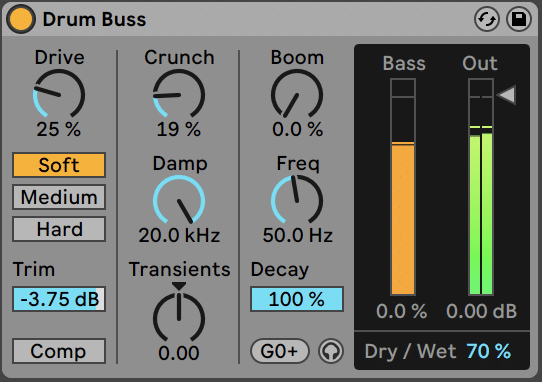
Compare the clean (first half) to the dirty (second half).
Now our 808 and drums are sounding tight, and we can move onto the rest of the track!
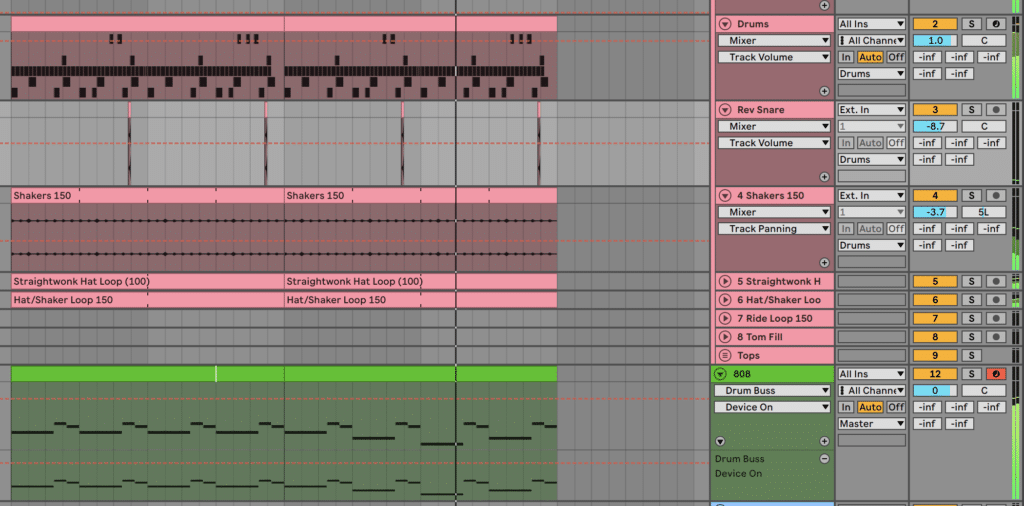
Note: make sure you've got 16 bars for the drop, and 8 bars after that for the next part of the process.
Step 3: Hype Melodies & Synths
The melodies and synthesized sounds (including midrange basses) are super important to fill in the mix, especially if you're making instrumental trap music.
Even if you have vocals, it's important at this step that you create a vibe for the track.
This is mostly borrowed from the style of classic trap beats, like Migos – Modern Day:
In this 'how to make trap music' guide, we'll be using these types of sounds. To start, we're going to turn our focus to the intro sounds, which will be a little more ethereal and melodic.
I'm going to be using a few of the Spitfire LABS (free) libraries. If you don't have it, download it from that link.
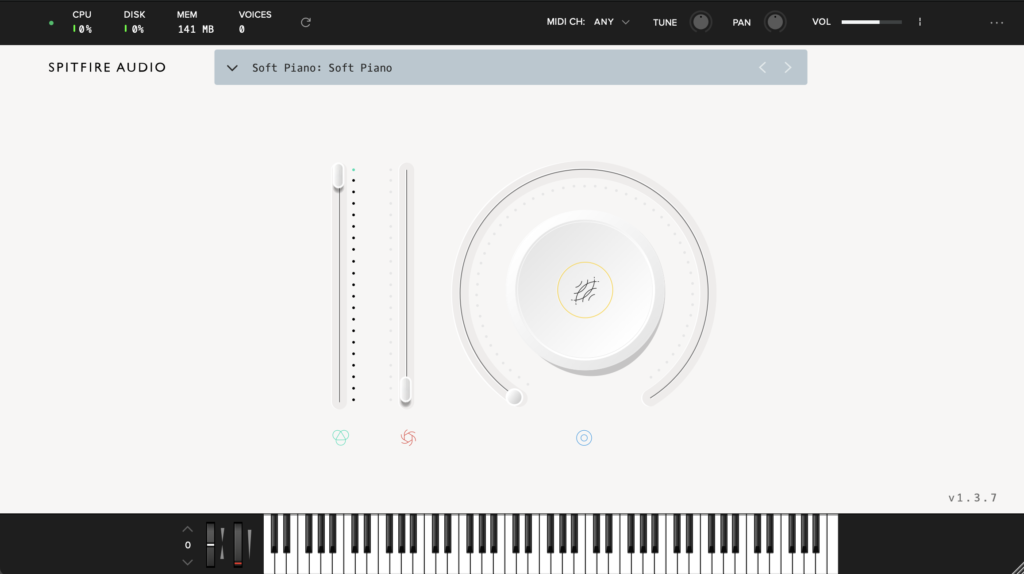
Ethereal Pad
We're going to start with a nice pad, so drag a new instance of LABS onto a MIDI track, and load up the Piano Pads > Impure patch. You'll want to give it a bit of volume as it's particularly quiet.
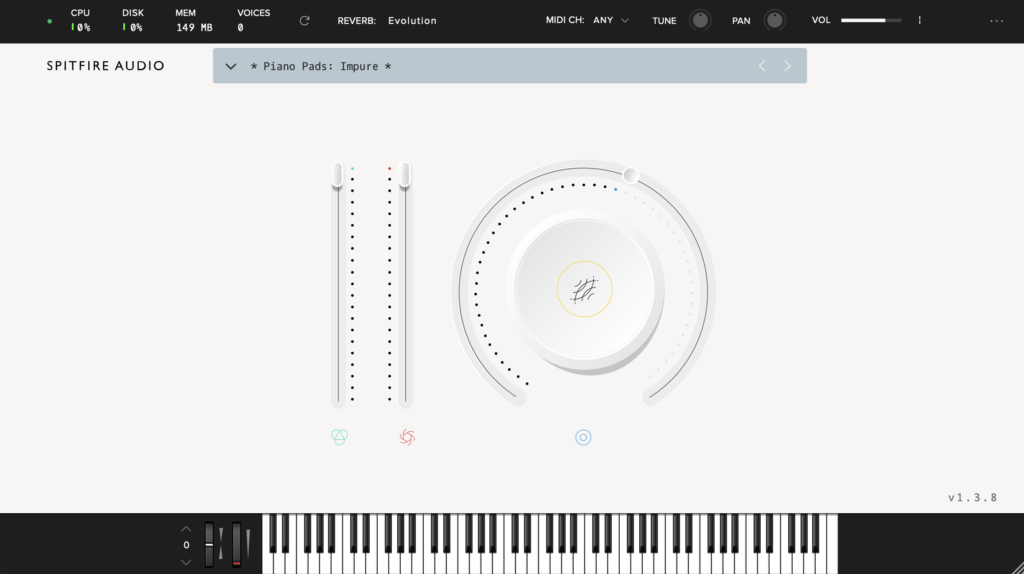
Next, you'll want to tweak a few of the settings to help it suit our track. These are personal preferences, but having faster attack and release times will give it an immediate playing effect:
- Attack: 71.5ms
- Release: 1.4s
- Reverb: 57%
Once you've got the sound sorted, copy the 808 MIDI onto the pad track. Copy it up an octave so you have two notes playing at a time. This fills out the spectrum quite nicely.
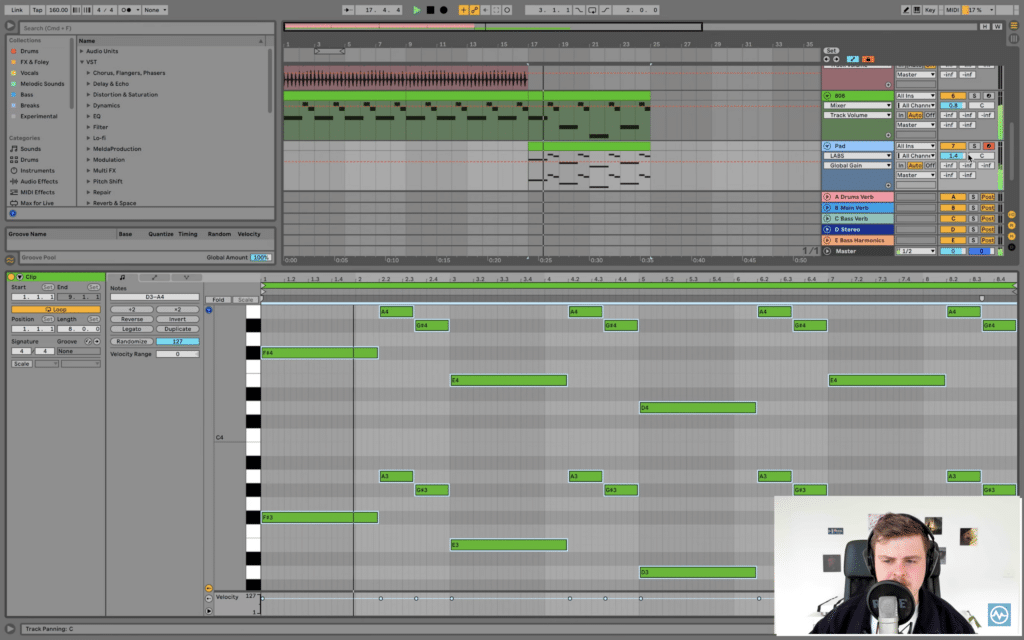
However, I want to give it a bit of a wavey-type effect. So grab your favorite chorus plugin and give it the desired wobble. I'm using Ableton Live's Chorus-Ensemble effect.
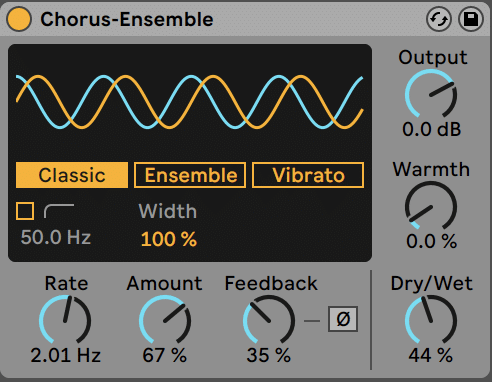
Ambient Keys Layer
Let's layer this up with another sound from LABS to thicken up the melody even more. Simply drag another instance on and load up the Rare Groove Piano > Sustain. Make sure you copy over the same MIDI as well.
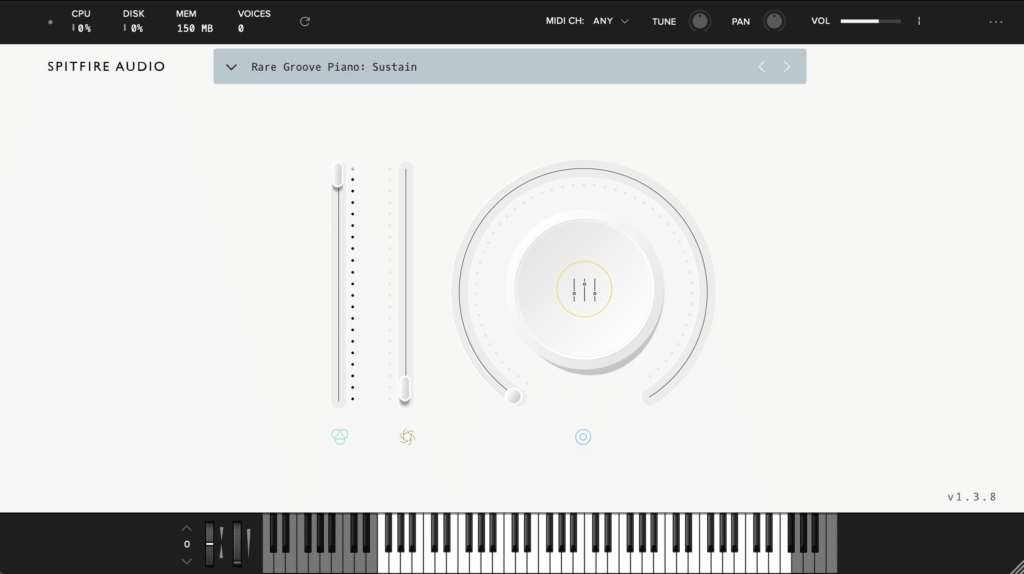
Feel free to lather it in reverb (you can do this by clicking the round button and dialing it up in LABS).
We also want this layer to be quite subdued in the mix, so let's low-pass it. I'm using FabFilter Pro-Q 3 here, but any EQ will do (Ableton EQ Eight, FL Parametric EQ 2 or Logic EQ is fine).
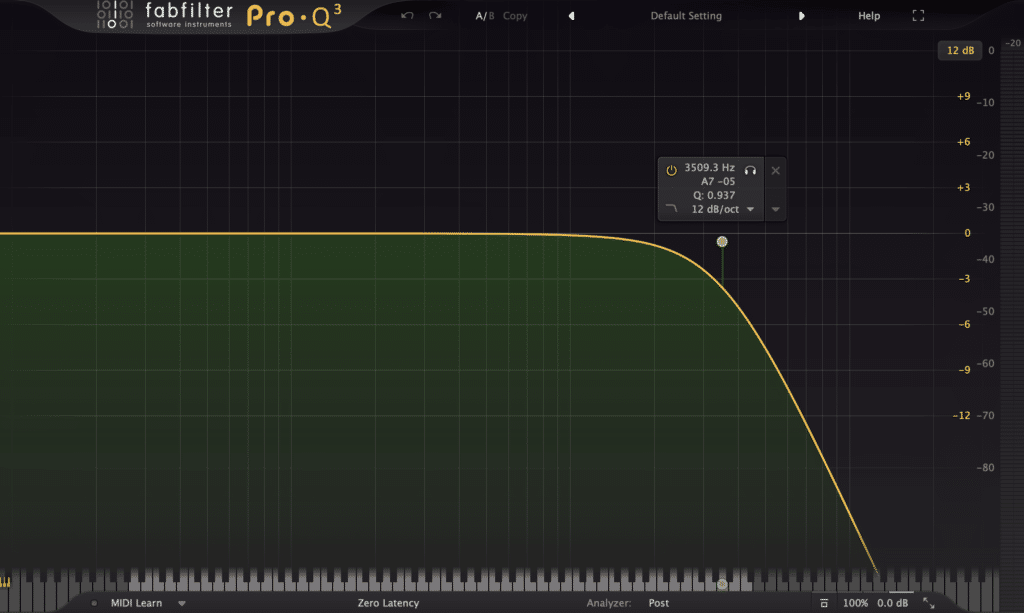
To make sure it layers up nicely with the pad, we'll also add some more chorus to the keys. I'm using slightly different settings here (i.e. the ensemble mode instead of chorus), as these subtle differences make the sound feel fuller.
If everything was sounding the same, we'd be doubling the sound, not layering.
Feel free to copy the below settings. Otherwise, experiment with your own (depending on the device you're using).
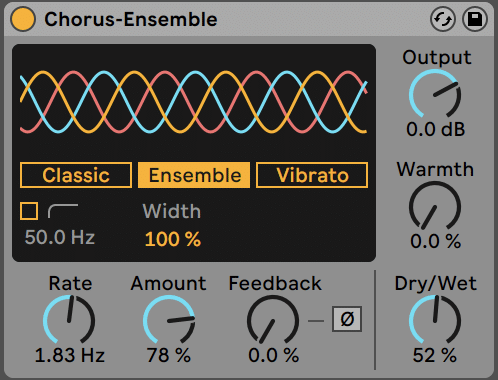
If you have some sort of reverb send set up, give both of these layers a decent amount of reverb to drown them out. Some sort of hall reverb works quite nicely for this – I'm particularly fond of Valhalla Vintage Verb.
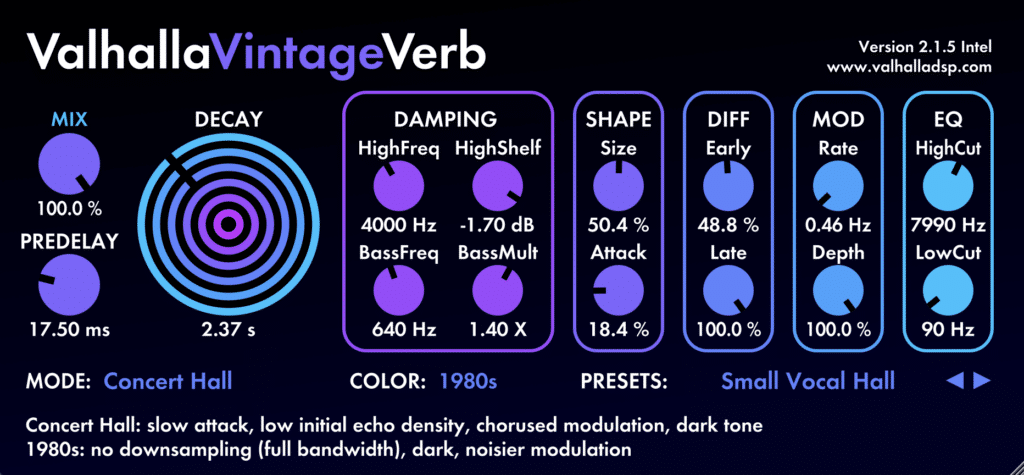
To get a nice balance, be sure to blend the two layers' volume so they're sounding blended. Now we've got a solid melodic hook that we can use in the intro and outro.
Let's turn to the drop and add some more energetic elements.
Trap Hype Lead for Drop
We're going to create a main hook element for the drop.
This is the climax of your track. So it's important you create something distinct, high-quality, and loud. For this style, I'm going to use a big detuned saw lead, which is common in trap songs by artists like RL Grime, Boombox Cartel and more.
(It's also common in closely related genres like Future Bass).
However, I'm going to use it in a much lower octave than normal.
Let's start by copying over the 808 MIDI to a new MIDI track. On this one, you'll want to load up an instance of Xfer Serum (you can grab it on rent-to-own here).
Load up the BS Oh Deer preset from the Trap Starter Kit and adjust the volume to taste.
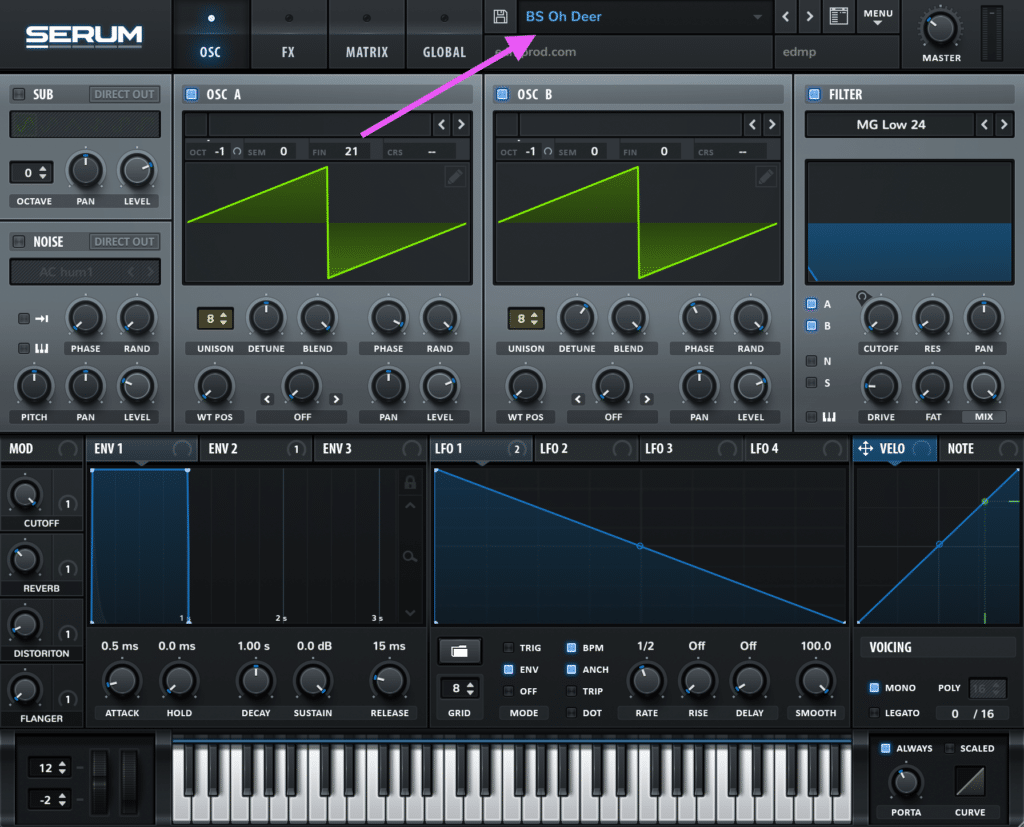
To make the drop interesting, we don't want to copy the same notes verbatim. Let's chop and change the MIDI clip by performing the following steps:
- Push the first note back 2 beats
- Leave a gap of 1 beat after the first bar
- Give every second F# note (that starts on the first beat) a pitch wheel automation, sliding it up the octave. You will need to change the Serum pitch wheel settings to go to (+12st)

And then add modulation to the clip:
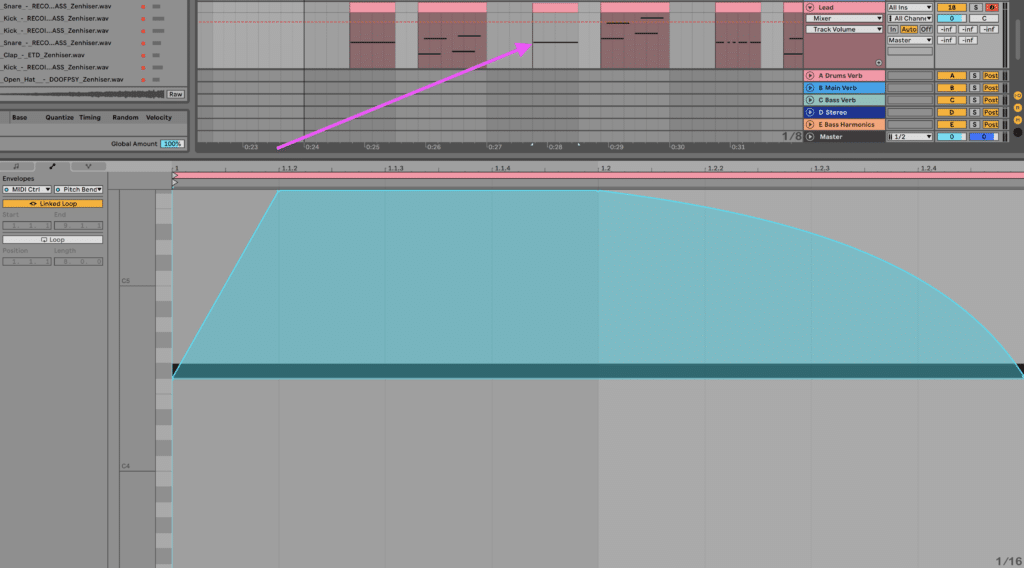
- Move the G# up to a B to create some interesting melodic motion. On every 2nd repeat, move the B up to a C#, and move all the notes up an octave.
- Copy the last two notes of every second bar up an octave. Move them forward by an offset of 1/16th to give them an octave sweep effect (as pictured below). Move that part of the MIDI down an octave. Shorten the notes by 1/8th in this section.
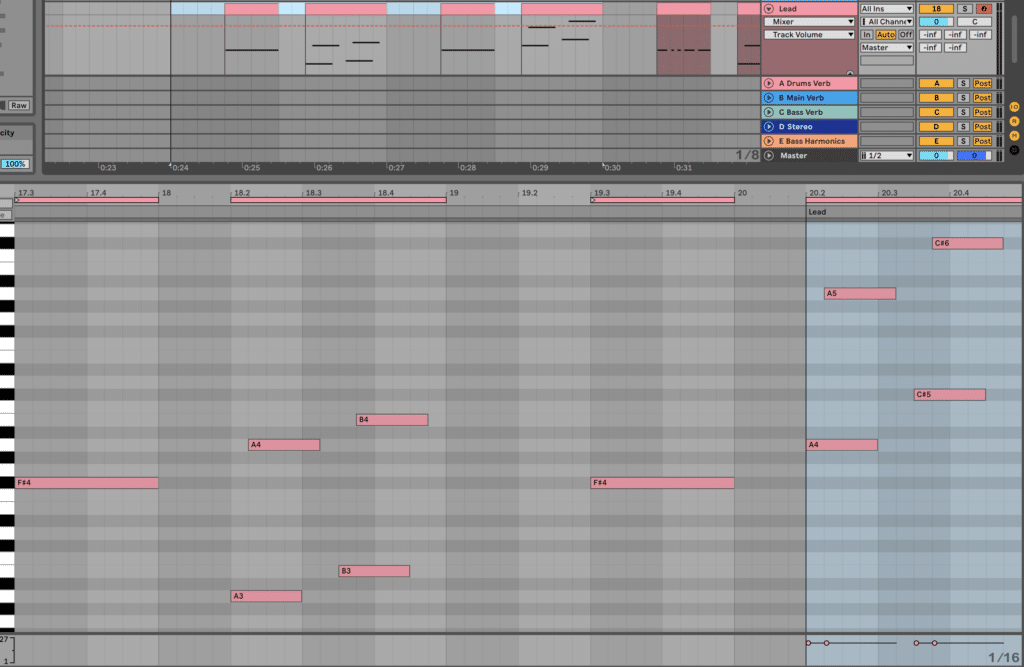
- On the 3rd first note hit (F#), create a stuttered version (pictured below).
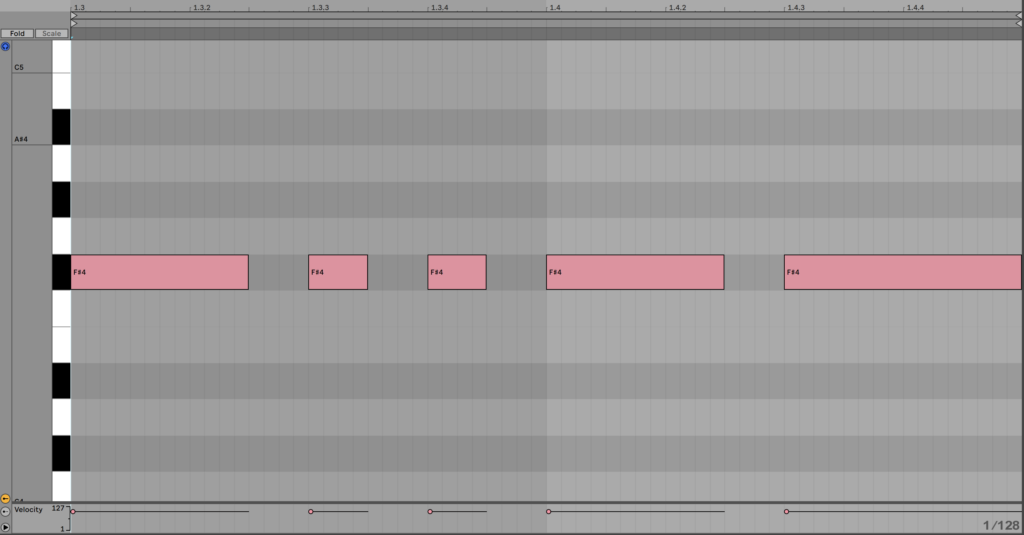
Lastly, take a few of the notes and sections out to create tension, particularly towards the end of a 4 or 8 bar phrase.
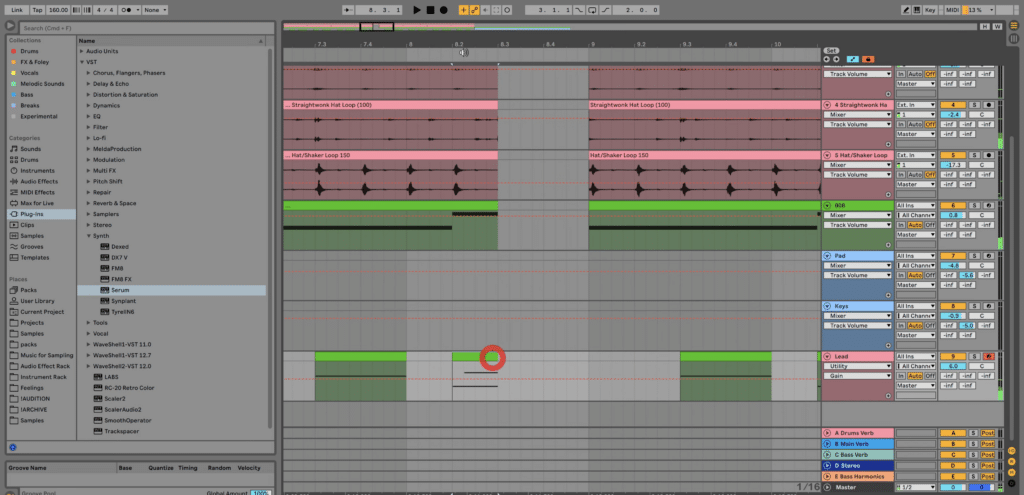
Here's what it sounds like (the 808 is muted so you can focus on the lead pattern).
This will create the main foundation of our drop, but to fill it out more, let's add in some bass sounds.
Trap Mid Bass Sounds
Midbass sounds are perfect for creating energy and grabbing attention in the drop. Especially if you have no vocal.
Particularly in hard trap, alternating between different sounds also creates a sense of variation. This is especially true when the drums and 808 remain relatively consistent.
Let's start by creating 3 new MIDI tracks – these will be our 3 different bass sounds that we use.
Growl Bass
On the first track, load up another instance of Serum. Select the BS Solid Growl preset from the Trap Starter Kit presets folder.
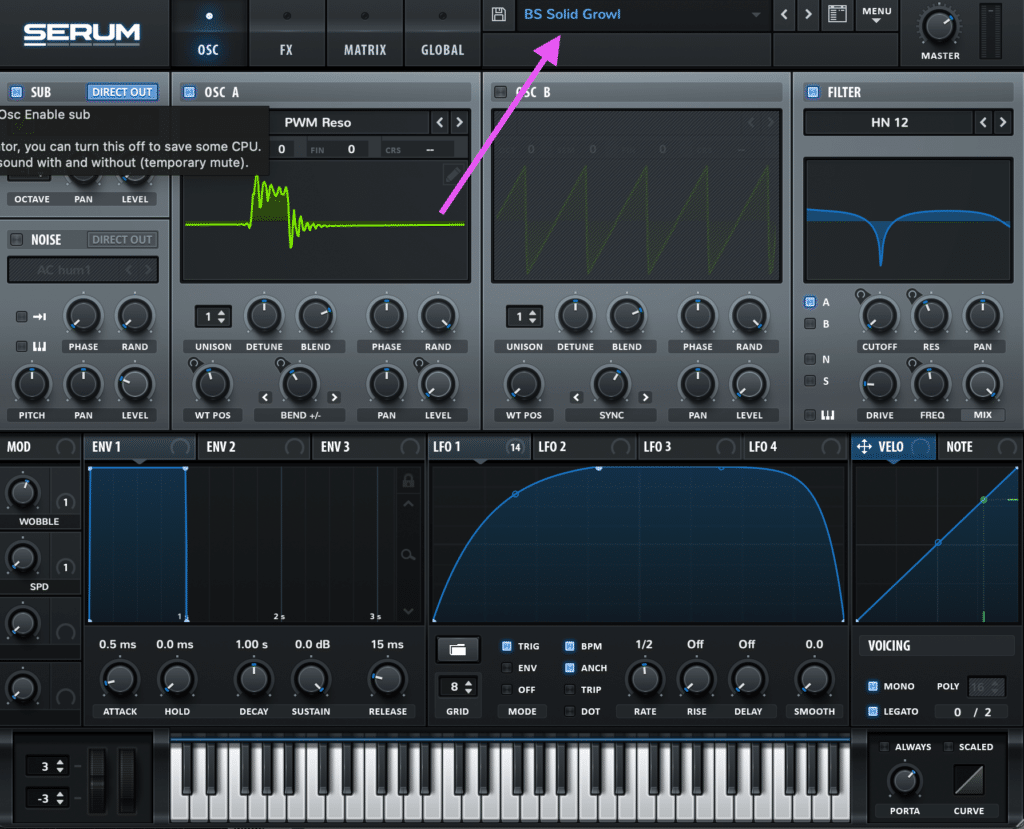
We're going to fill that two-beat gap created at the start of the drop with an F#1 note.
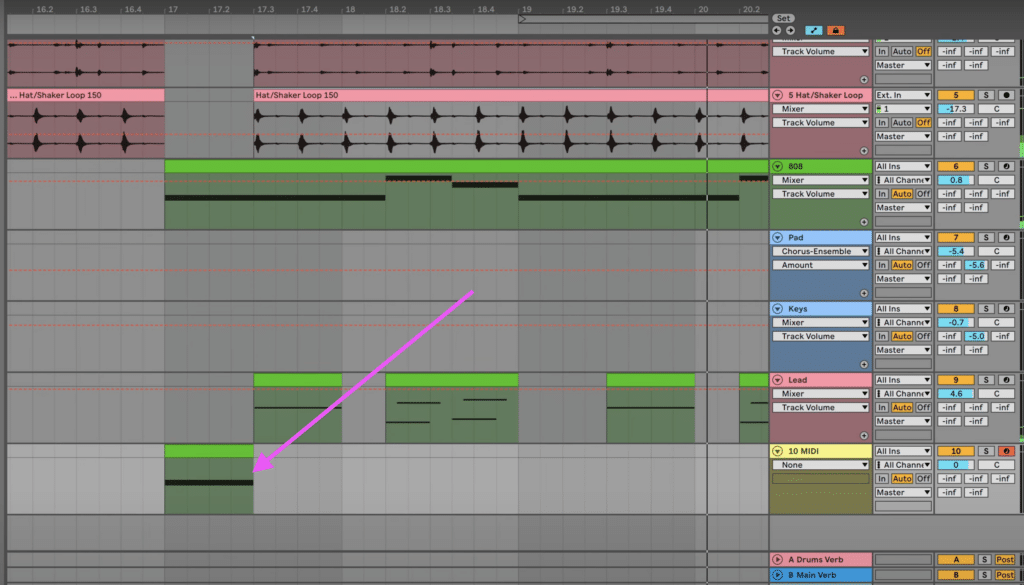
Copy it over to the second 4 bars, and in the second half of the second 8 bars as well. Transpose the last one down to match the notes of the other elements in the second half of the drop.
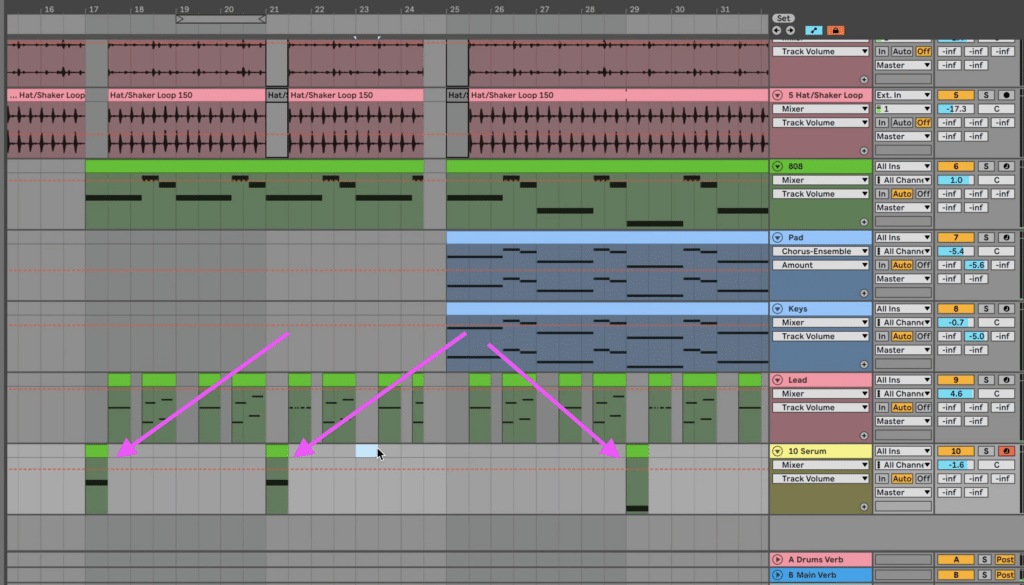
Reese Stabs
To fill the 2nd and 4th gaps every 2 bars, we're going to bring in a second sound onto one of the other new MIDI tracks. Load up Serum and head to the stock presets Bass (Hard) folder to load up BA Deth reese [GI].
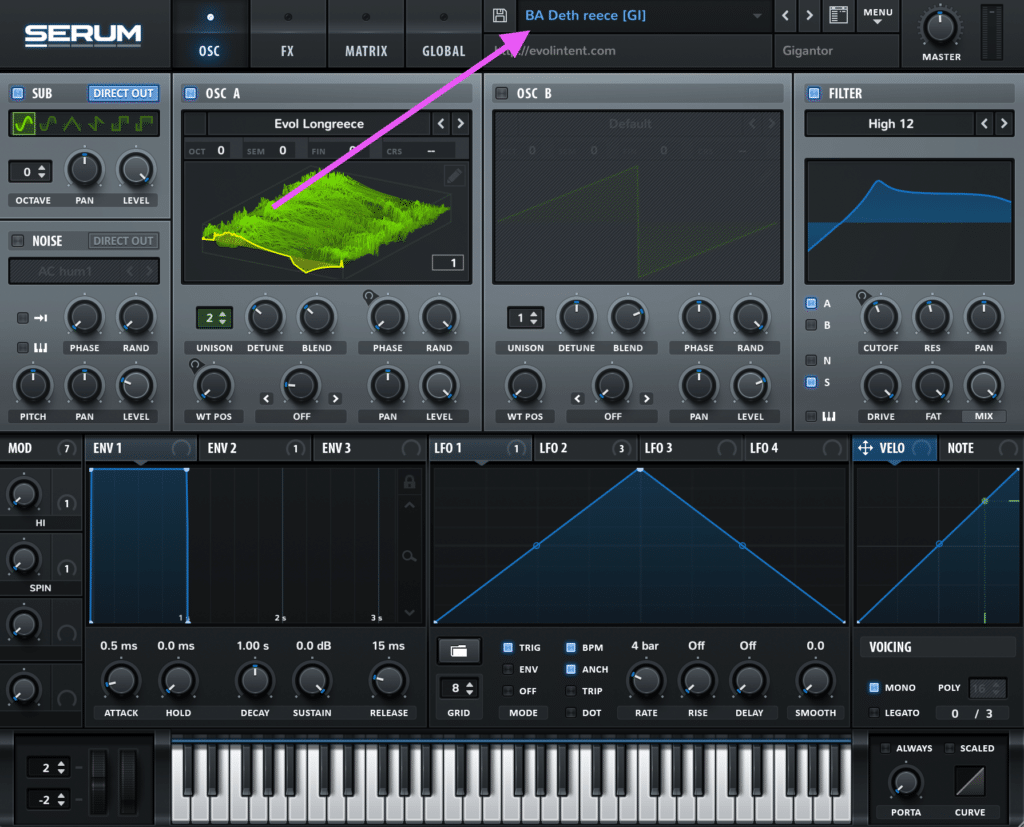
We're going to use a 1/16th note pattern with a shortened note length. This will make the moment a little more interesting and will help the drop flow more.
Simply program in 2 F#1 notes, 1 C#2 note, and another F#1, like so:
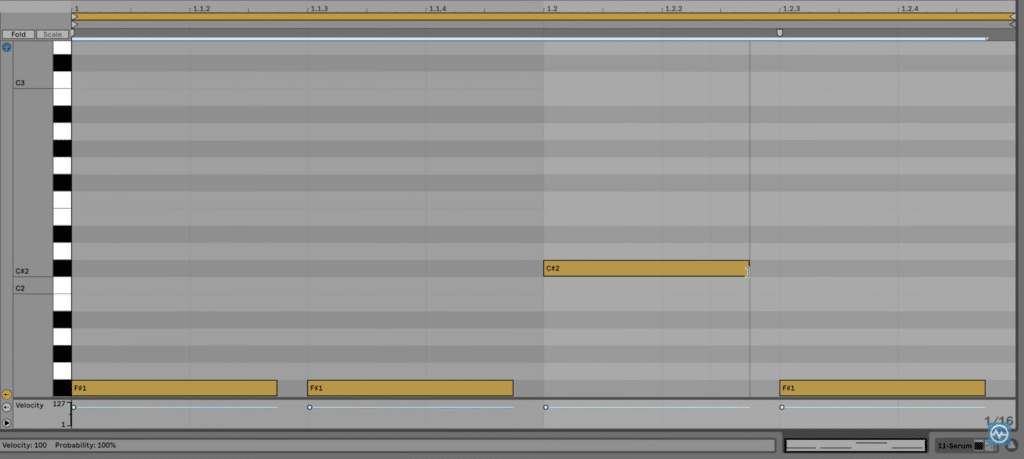
The silence between each note determines the sense of urgency. So be deliberate with your note length.
Copy the sound across to every 3rd bar in every 4 bar phrase. Transpose the last two phrases in relation to the notes of the atmospheric elements.
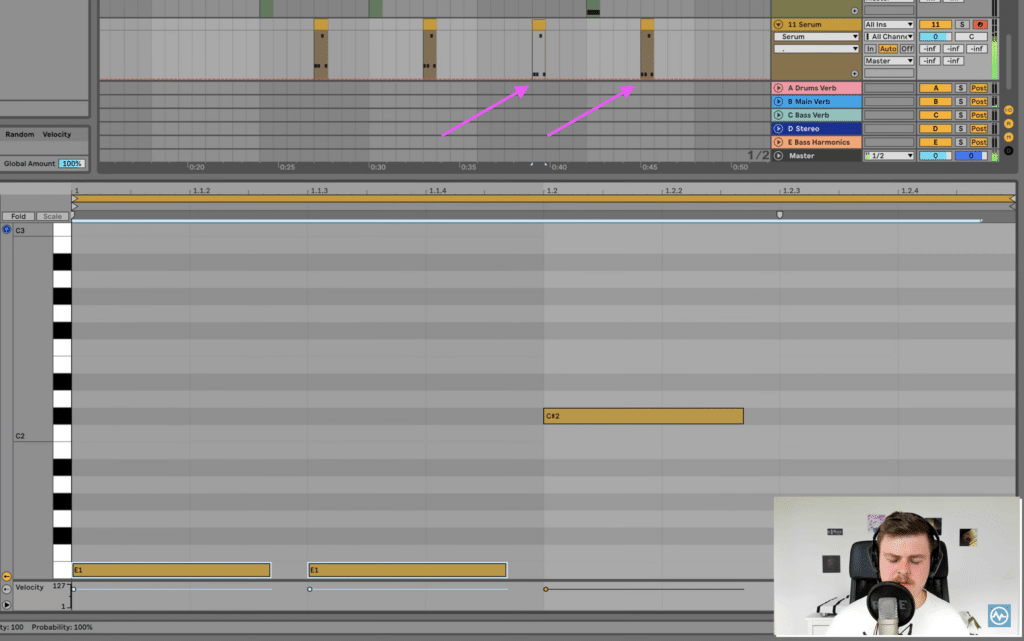
Stab Bass
Lastly, we'll add in a more subtle sound – the BS Stabby Hype Bass from the Trap Starter Kit.
This sound will be used to add a little rhythmic groove to the drop.
Add an F#0 note 1/16th before the two sliding notes that go up to the C#:
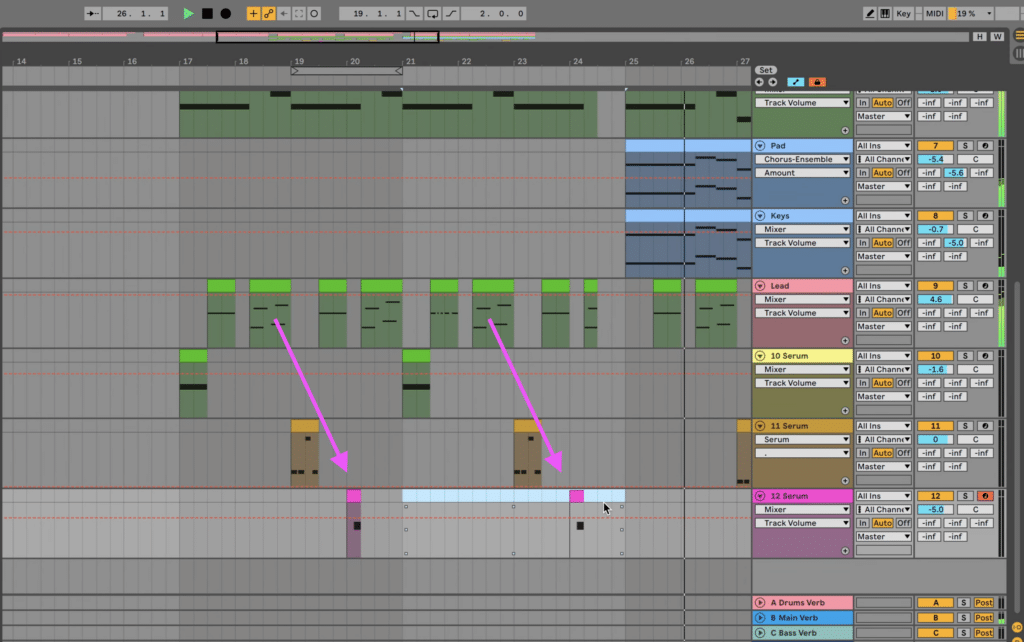
Transpose the second two down to match the notes in the drop. Here's what the drop will be sounding like:
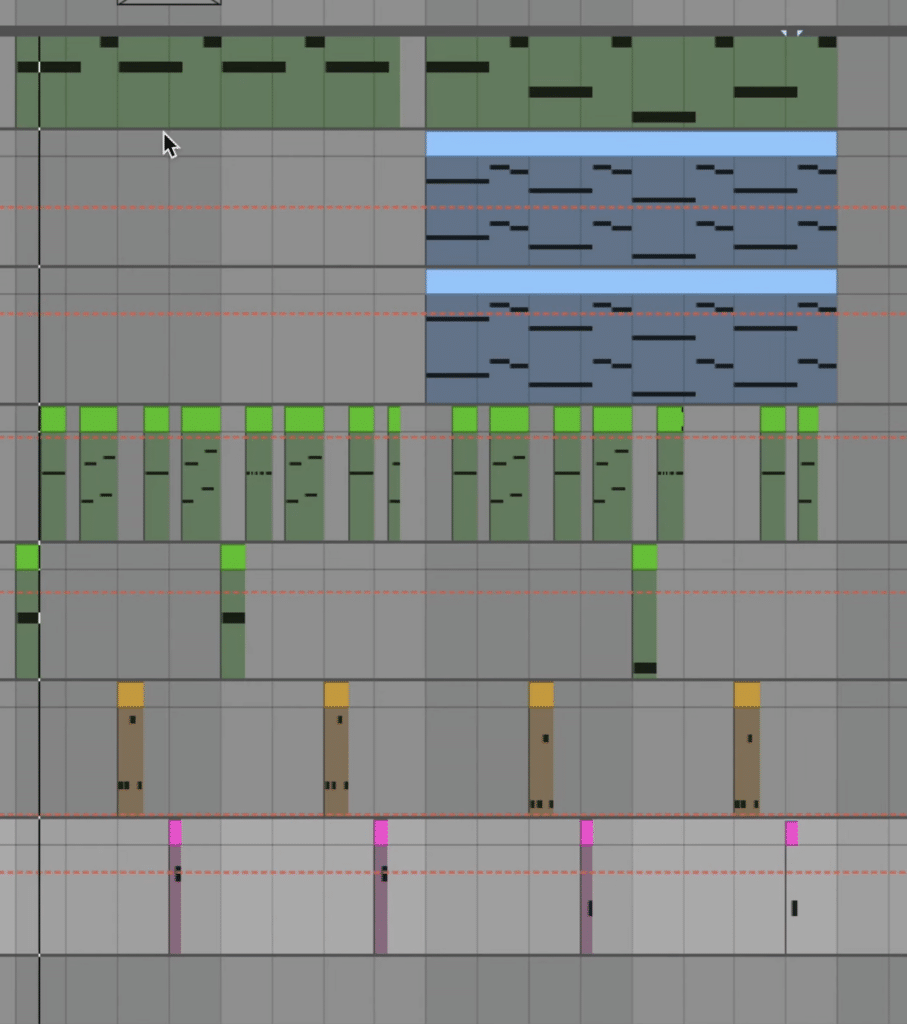
Now we have a detailed and solid drop that doesn't get boring throughout.
But there are a few more details we can add to strengthen our track even more, so let's turn to FX!
Recommended: Serum Presets: The Best Free/Paid Packs in Each Genre
Get the headstart you need in music production with our Trap Starter Kit
- Have the best synth sounds on hand with high-quality Serum presets
- Craft drums effortlessly with 50+ trap drums and FX samples
- Get all the info from this guide in a one-page trap production cheat sheet
Step 4: Sprinkle the FX
When it comes to using FX in trap music, it's important to match the energy of what is going on in the rest of the track. These layers create more depth in the track and make it more interesting to listen to.
In this example, we're going to keep things simple by using two FX samples: an impact and a background vocal hit.
Impact FX
The chime hit will add impact to the beginning of new sections. So create a new audio track and drag in the Chime Noise Hit sample from the starter kit.
Make sure to drag it right at the start of the track, and also 2 beats after the start of the drop.
Normally it's fine to add an impact on the first beat of the drop. But we want the growl to have more emphasis, so move it 2 beats forward – in alignment with the first snare.
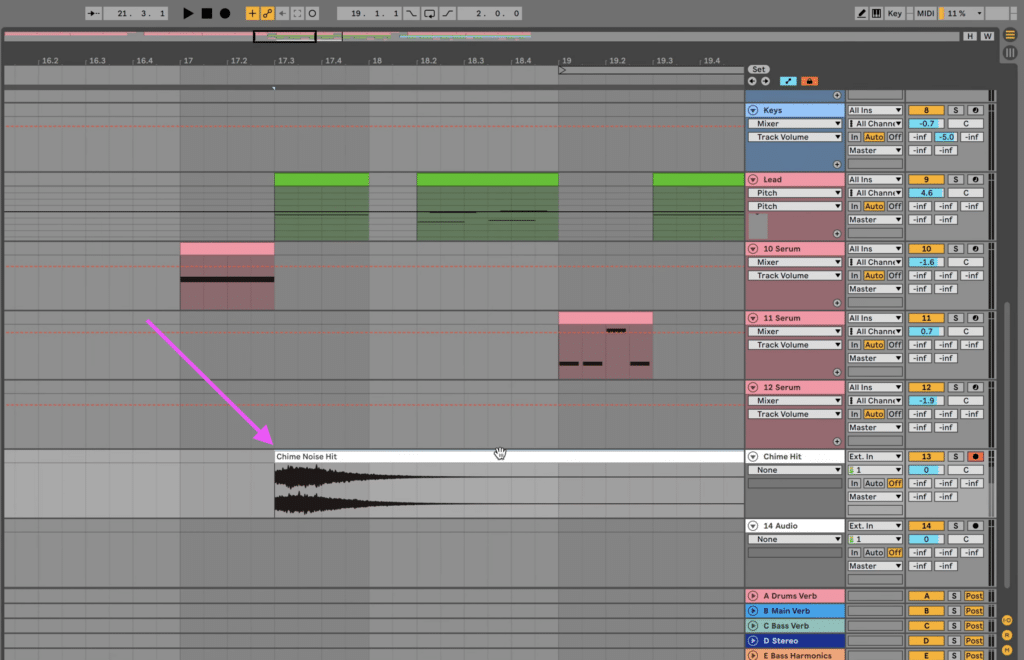
Adjust the volume to push it into the background.
Background Vocal FX
Now we can add the background vocal hit. So if you don't have a Splice Sounds subscription, feel free to sign up (you get a free month when you enroll in our courses).
I used the FM_vocal_scream_pitchy.wav sample from the Fabian Mazur – Hype Vocals pack:
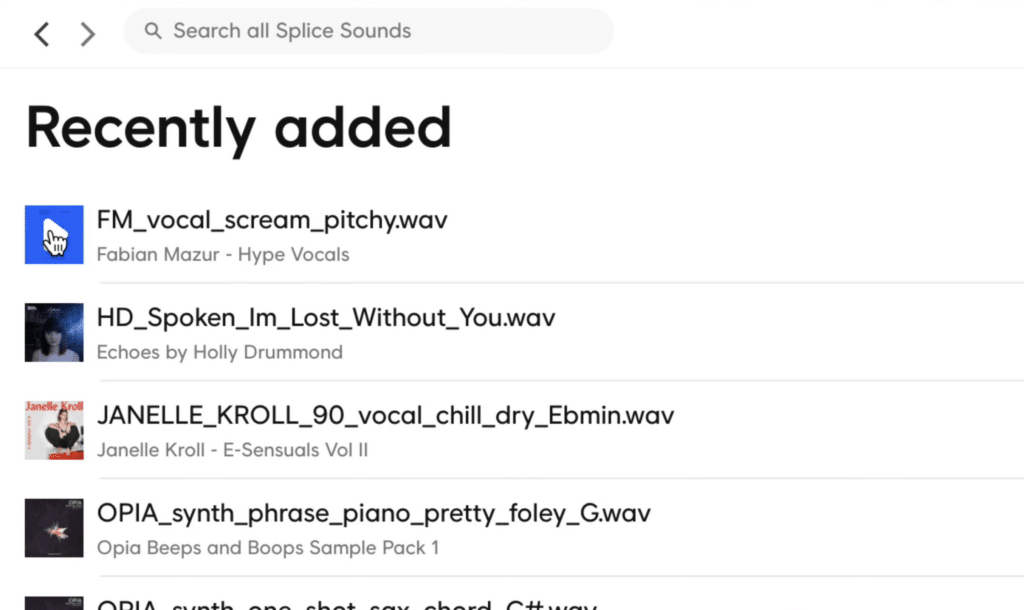
I've added the sample on every 4th beat of the first bar of a 4 bar phrase. If this sounds confusing, just look at the placement in the arrangement:

We'll also need to transpose it up +2st so it sounds harmonically related to the rest of the track.
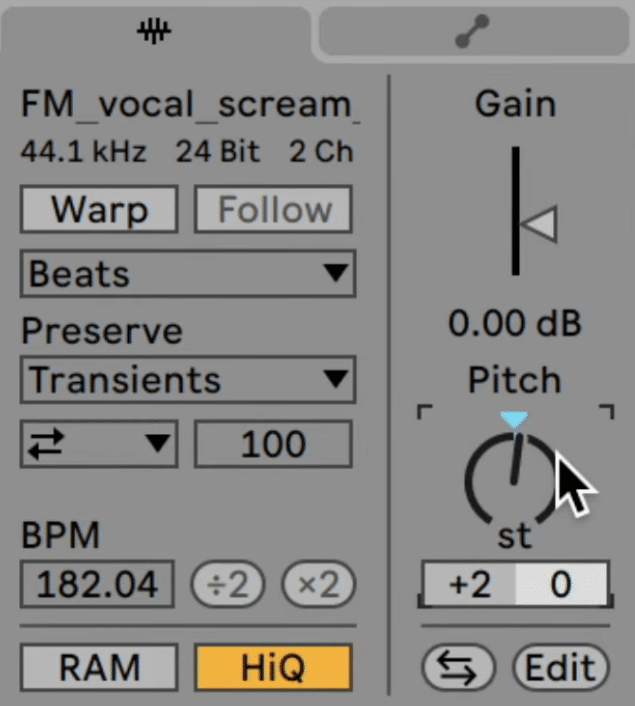
Let's copy this to the intro and the drop so it remains consistent, except the first 8 bars of the drop.
We want the first half of the drop to be focused on the lead. So removing other sounds will help create this contrast.
To push this sound into the background even further, let's add an EQ and cut out the low end, as well as some of the high end. I'll use a cutoff of both 500Hz and 7kHz, respectively.
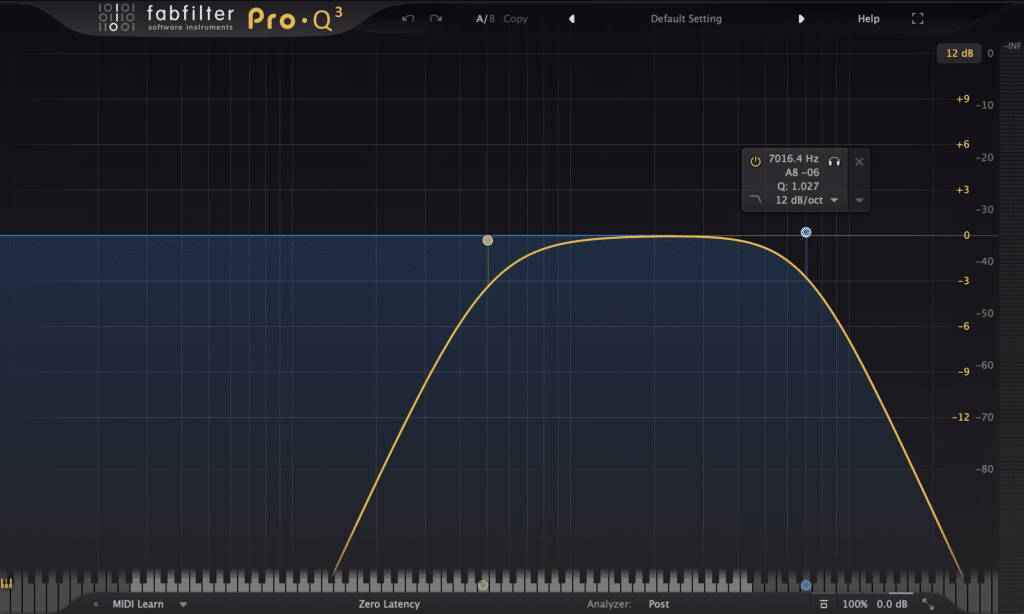
Now our track has a little more flavor, and we can add even more FX by creating energy in the next section.
Step 5: Create Energy
Now that we've got a solid set of ingredients, we can start to think about the structure and energy of the track.
Because a track is more than just an 8 or 16 bar loop.
Fleshing Out A Solid Trap Arrangement
In trap music, you'll normally have something that follows a structure like this:
Intro (8-16 Bars) – Breakdown/Build (8-16 Bars) – Drop (16-32 Bars) – Drop Variation (Optional) (16 Bars) – Breakdown/Build (8-16 Bars) – Drop (16-32 Bars) – Outro (8-16 Bars)
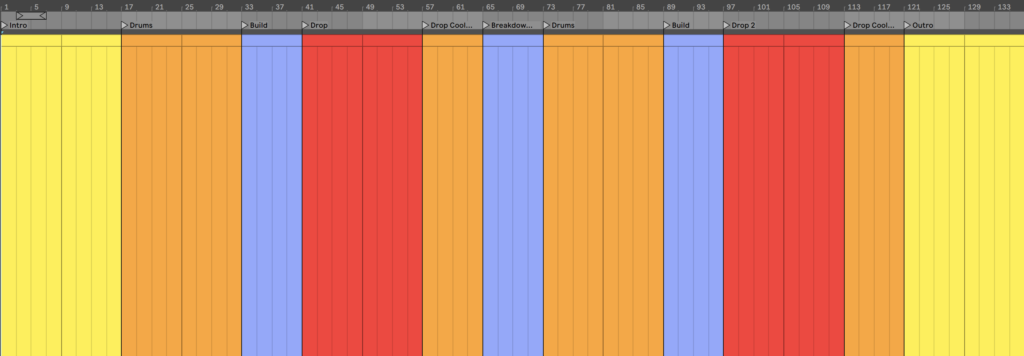
An example of a song that follows this structure would be RL Grime & Whethan – Outta Here:
But for this example, we're going to only create a half-length track. Here's our structure:
Intro (8 Bars) – Build (8 Bars) – Drop (16 Bars) – Outro (16 Bars)
You can add a different second drop after another breakdown and build if you like.
Let's add some markers to our arrangement to reflect this:
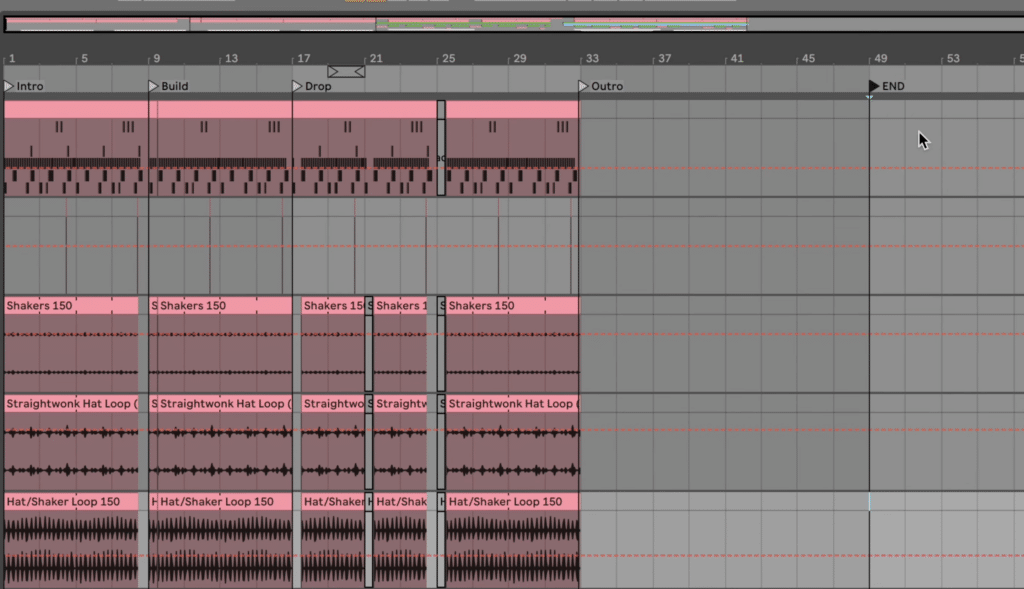
Doing this gives us both an outline of the track, as well as defines the purpose of each section.
Let's copy the drop drums over to the intro so we can make them slightly different. To carry the energy into the build section, we'll pull in another loop to vary up the drums and add some top-end energy.
Drag the Ride Loop 150 onto a new audio track right from the start of the build. We'll also emphasize this by removing the Hat/Shaker Loop from the first 8 bars.

This sound will need a bit of a volume balance and some EQ to tame the overly bright top end. This helps the loop to sit in the mix properly.
While we're at it, copy the first 8 bars of intro drums to the outro, and duplicate it. This prepares us for working on the outro too, as the two sections will share similarities. Copy the ride loop to the first 8 bars of the outro as well.
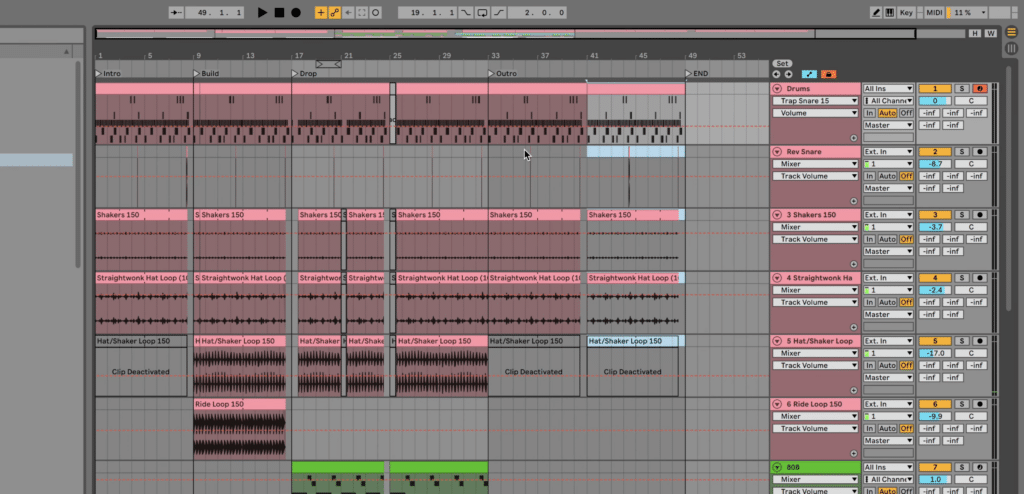
The Build: FX
It's important in trap music to create a strong sense of anticipation before the drop, as it's the climax of the track.
To change up the build, we're going to create tension in our drum patterns in a few different ways.
From bar 9 onwards, we're going to have a kick hit on the 1 and then cut out.

Towards the end at bar 13, we'll add a kick every 2 beats, then every beat, then every 1/2 beat.
To create some anticipation for the drop, we'll also take everything out two beats before.
From bar 13 as well, we'll add the offbeat snare every beat and increasing in rhythm. The result will look and sound something like this:

While we're at it, we can give the drop even more impact by taking the bass out of the drums with a high-pass filter. This is common across many genres of electronic music to create a strong sense of tension.
I'm going to use Ableton Live's Auto Filter, but you can feel free to use any EQ or filtering plugin:

Simply select a high-pass filter and automate the cutoff from bar 13 to halfway through bar 16:
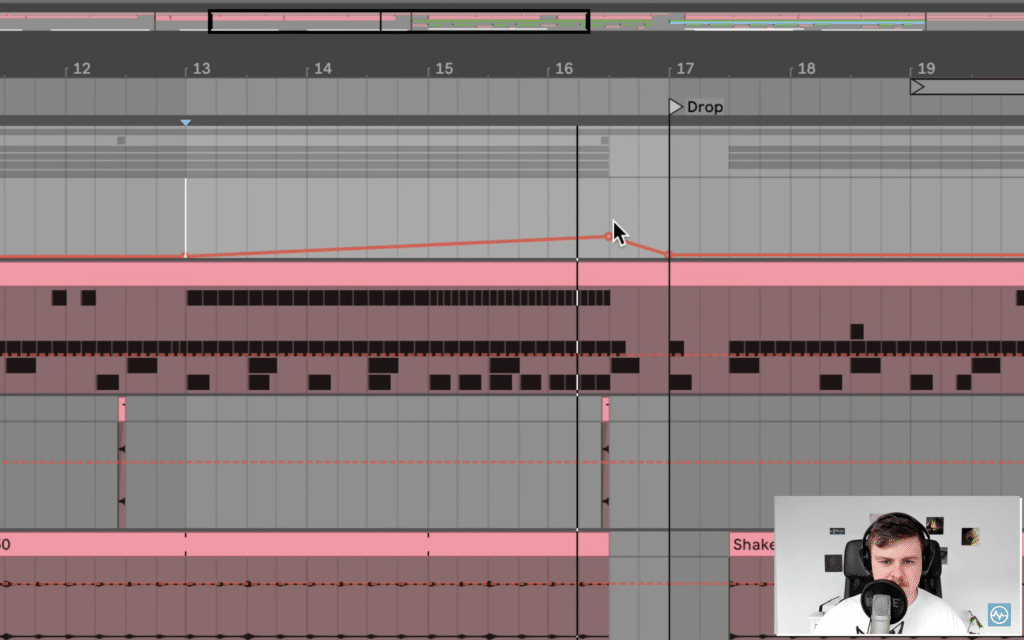
You can play with the exact cutoff values, but creating a slope upwards from 0Hz to 140Hz worked for me. Make sure to automate the on/off of your filter, so it doesn't affect the drums for the other sections of the track.
Now that we have a sweeping sound in our arrangement, let's add two risers samples to reinforce this energy in the build section. Let's grab the Long Sweep Up sample and 8 Bar Riser sample onto two new audio tracks.
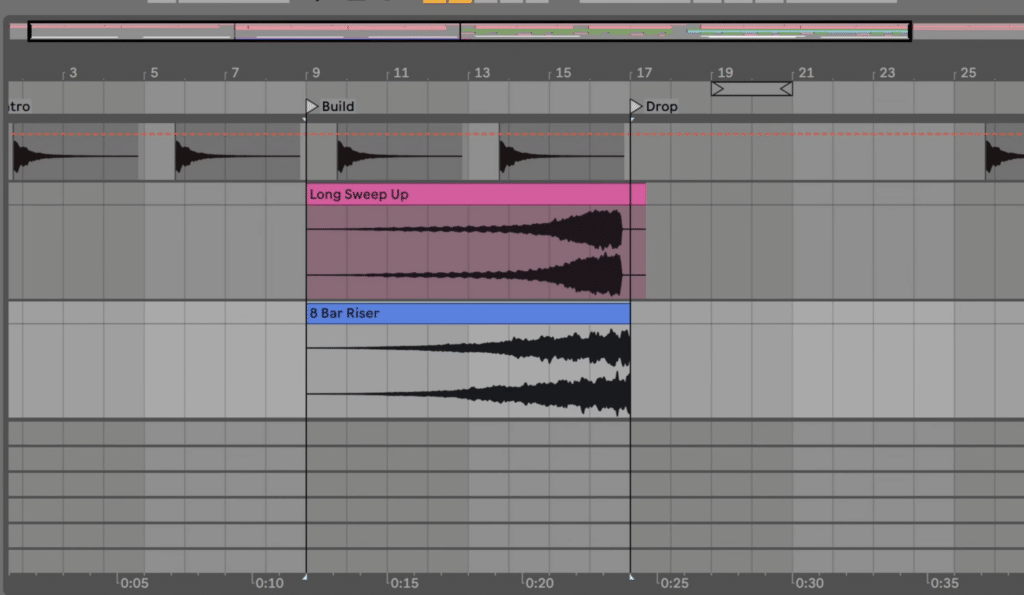
Unwarp both and align them so they end right on 16.3 when the two-beat gap before the drop is.
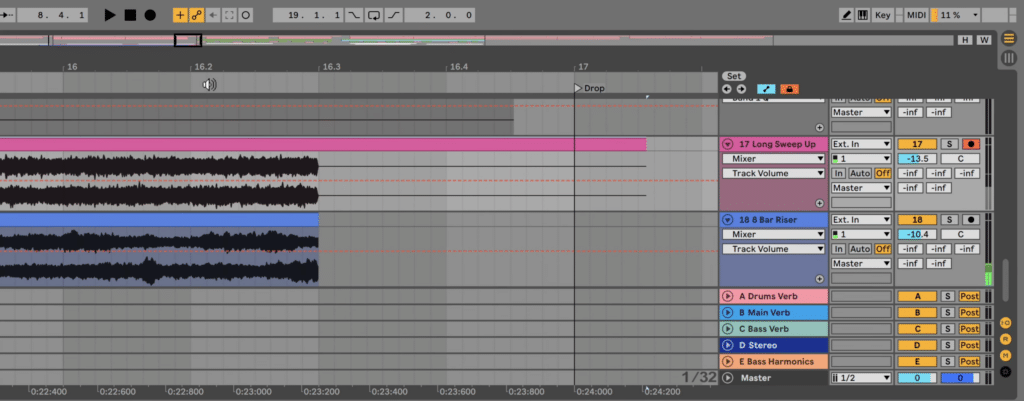
To finish, blend them to taste (down 12 to 18dB works well here, otherwise, they will be too overpowering).
The Build: Teasing The Bass
We'll also want to introduce some of the mid-bass sounds to bridge the gap between the build and the drop.
Many trap songs suffer from the build and drop having almost nothing in common. The build here acts as a transition so your listeners aren't confused.
So copy over the Deth Reese pattern and have it repeating from bar 13 onwards:

This works in theory, but the sound is too overpowering for this section.
Thankfully, the mod wheel is mapped to the filter cutoff for this preset, so let's modulate the mod wheel to bring it in over 4 bars.
Also, automate the volume so it increases over time to the max. I used Ableton Live's Utility for this.
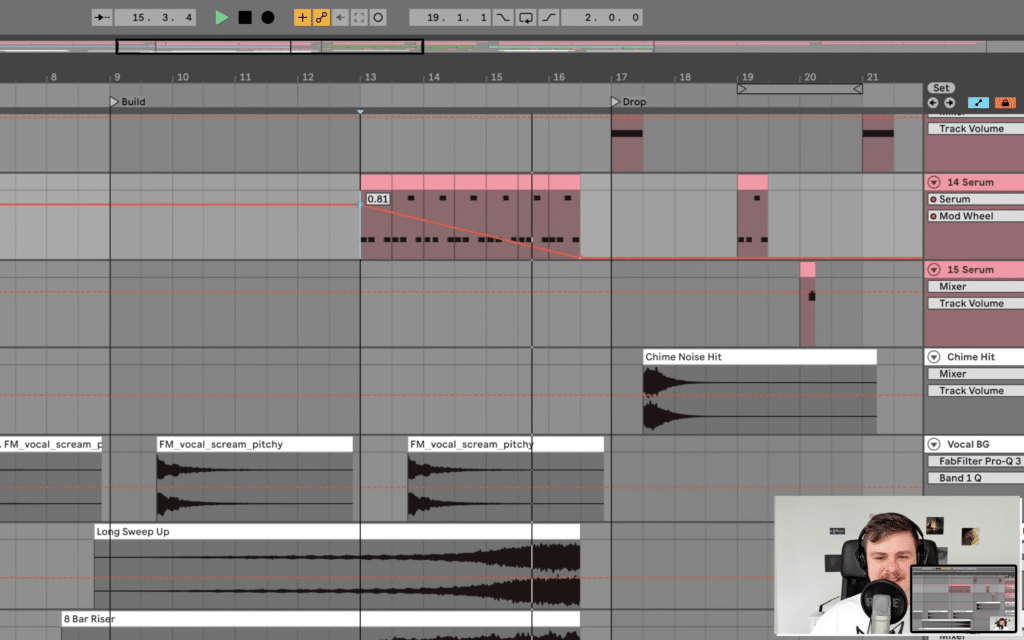
Continuing the theme, we'll copy the first growl in the drop over to bar 13.
Create a highpass filter at 500Hz to cut any low end out, as well as a low-pass filter at around 3-7kHz.
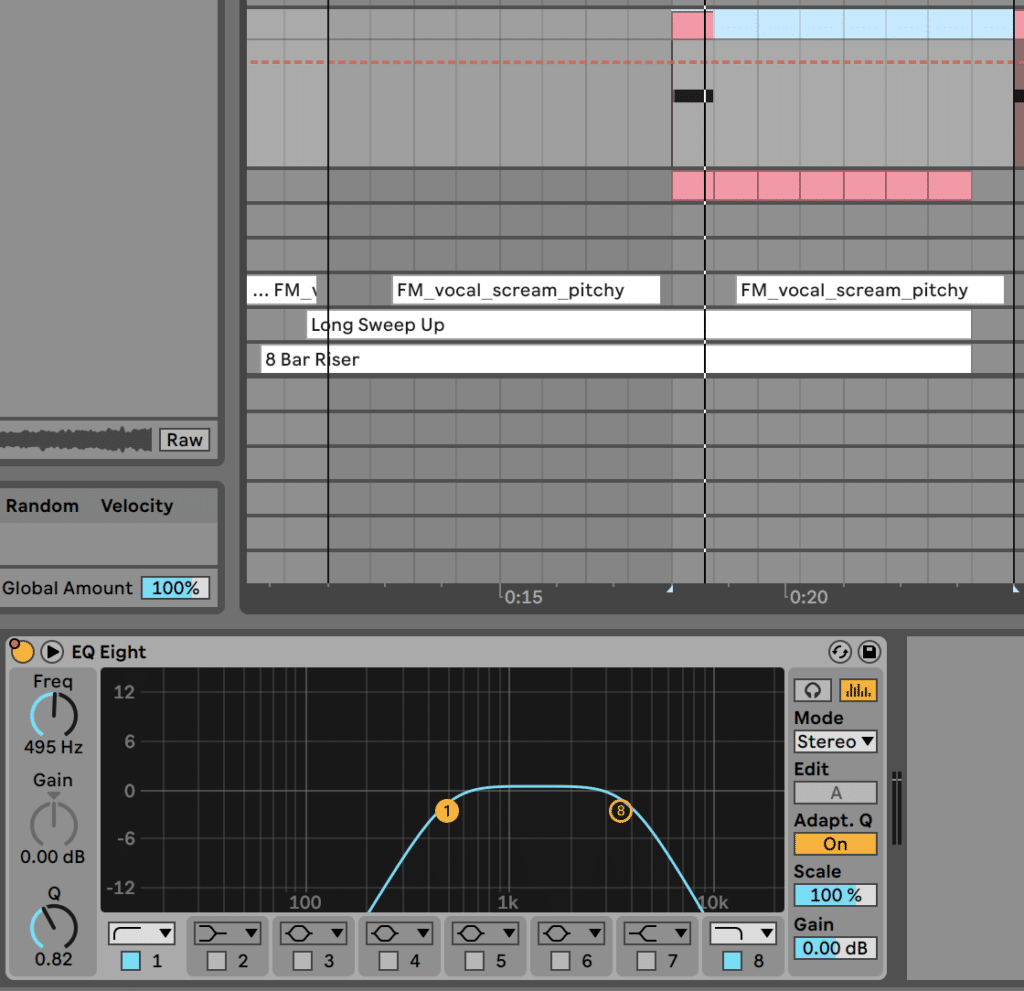
Lastly, bring the keys and pad out at bar 15.3 so they don't fill the gap created by the rest of the elements cutting out. We want to fill this with a tom fill later on.
The Drop
Being the most energetic point in the song, we want the drop to have maximum energy.
We've done this already by creating the bass phrases in the last section, but we want to fill it out even more.
A common way to do this is to use crashes, noise, and other 'washy' sounds in the background to fill out the high end.
Let's bring into two samples to fill out this spectrum from the pack – Open Hat and Tape Noise Hit. Drag them onto two new audio channels:

Simply have the Open Hat repeating every beat, and the Noise Hit repeating every half bar.
We're using two samples as the Open Hat gives us a rhythmic background, whereas the Tape Noise Hit creates a general noise effect.
Make sure you take them out in alignment with any other gaps in the drums.
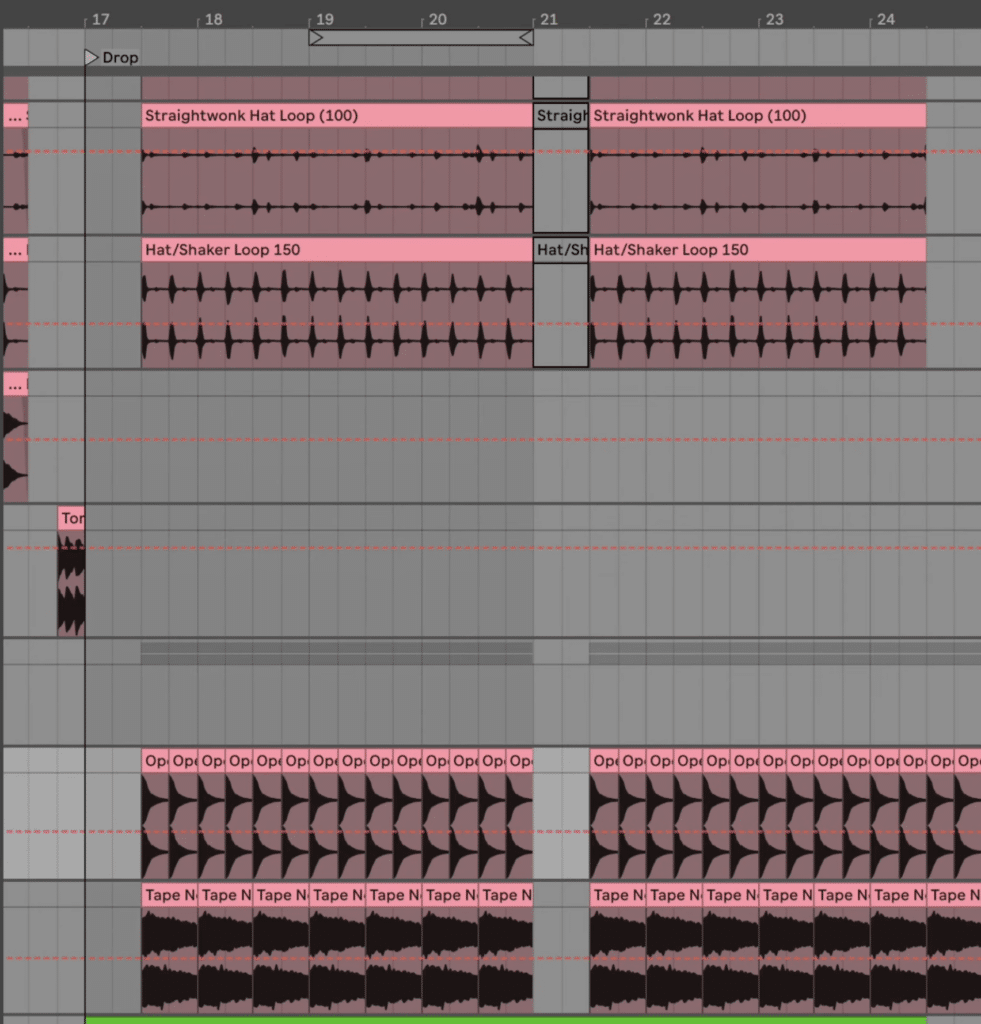
You'll also want to high-pass the Tape Noise Hit at about 1.4kHz to cut out any muddy low end that is present in the sample.
Lastly, push these out into the background by turning down the volume. Once we add limiting and compression at the final stage, this noise will help the track to come alive.
The Intro
Copy the pad and keys over from the second half of the drop to the intro. This will introduce the main melodic idea in a subtle way.
Start by removing the keys from the first 8 bars to make it even more ambient for the very first section:
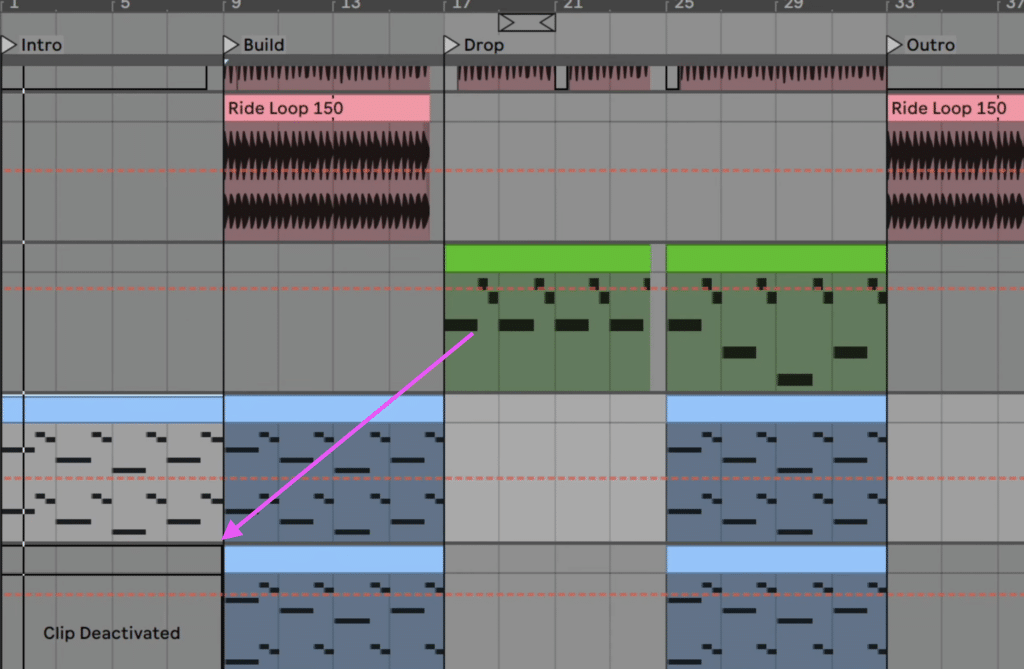
Remove the higher octave notes from the pad as well, to make it more subdued.
We also want to copy over a Chime Noise Hit to the first beat of the intro, creating an initial sense of excitement in our track.
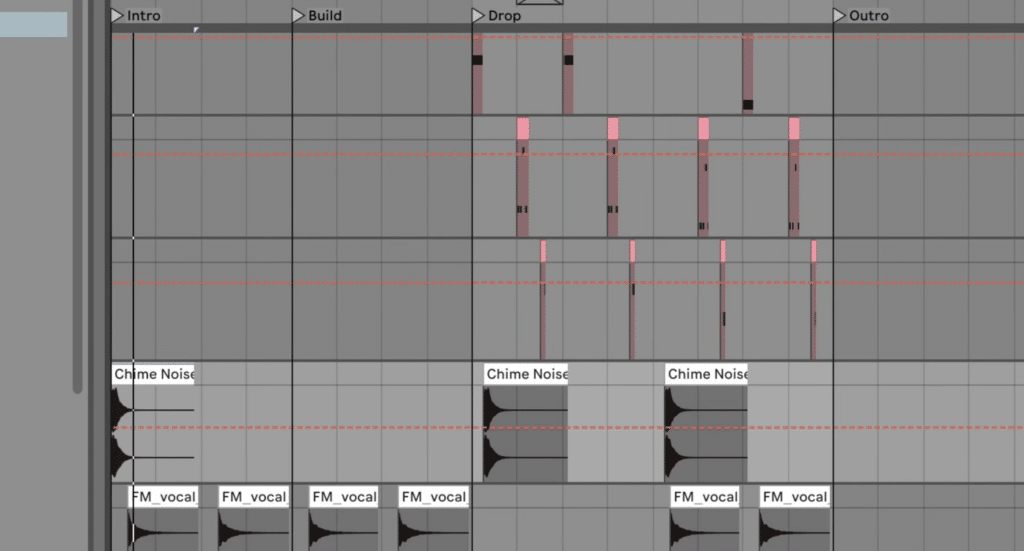
Resampled Pad Ambience
Lastly, it's nice to add something distinct to the drop as it gives the section more value to the listener. This doesn't have to be a crazy element – even something subtle can make a difference.
So in this section, I resampled the original pad and reversed it over two layers, repeating every half bar:

One of the layers is down -12st, and the other -5st. This creates a nice harmonic sound (especially when using the texture warping mode).
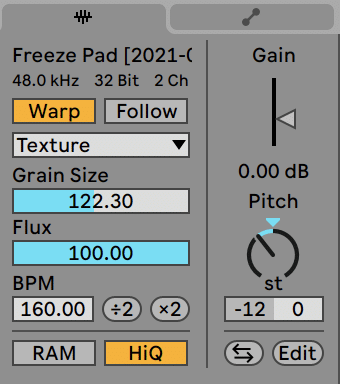
I also processed it with a bunch of FX. The exact processing doesn't matter – it's about transforming an existing element into something else.
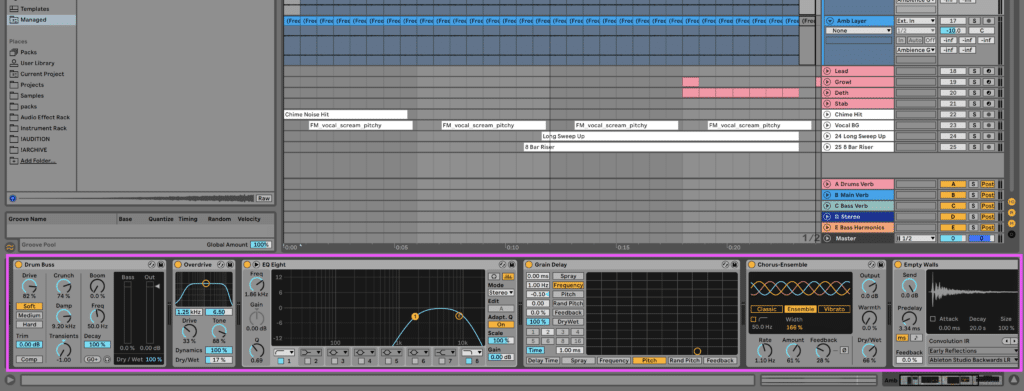
All you have to do is turn down the layers to taste and add a high-pass filter sweeping down. After all that, here's how the intro is sounding.
Copy these over to the second half of the drop, and the outro, which we're about to get into.
The Outro
The aim of this section is to somewhat mimic the intro, but also to bring down the energy for the close of the song.
To start, we'll copy the pad and keys over from the second half of the drop, twice. For the second half of the outro, we'll transpose the MIDI of the keys down an octave to bring down the energy.
Also copy over the Chime Noise Hit on the first beat of the outro. Make sure the BG vocal stabs continue throughout this section too.
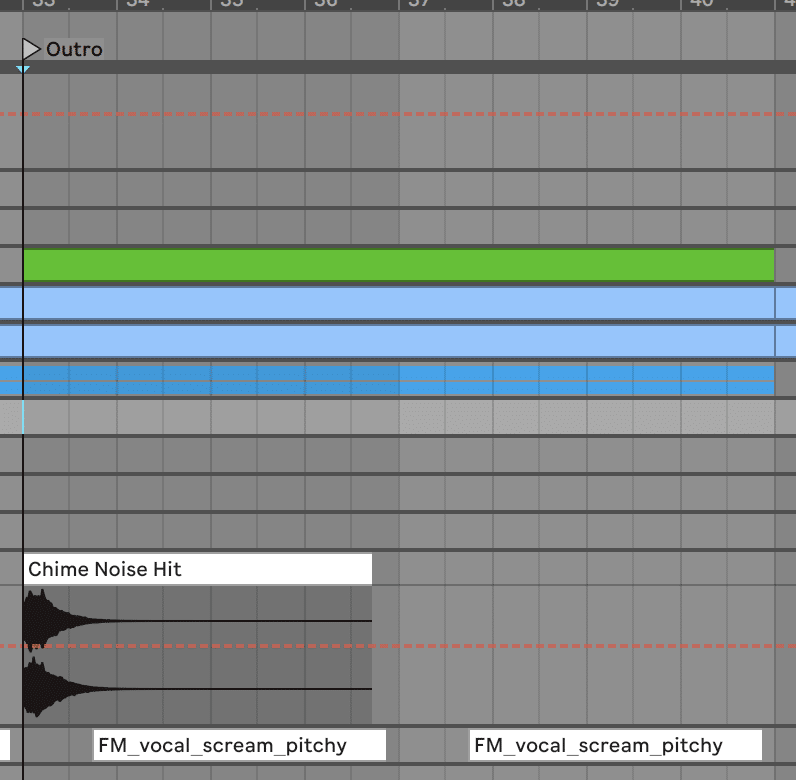
Copy the 808 patterns over to the first 8 bars of the outro to give it some continuity out of the drop.
And then also copy over the 'pitchy' lead clip so it retains some resemblance of the drop. But add a low pass filter to push it into the background.
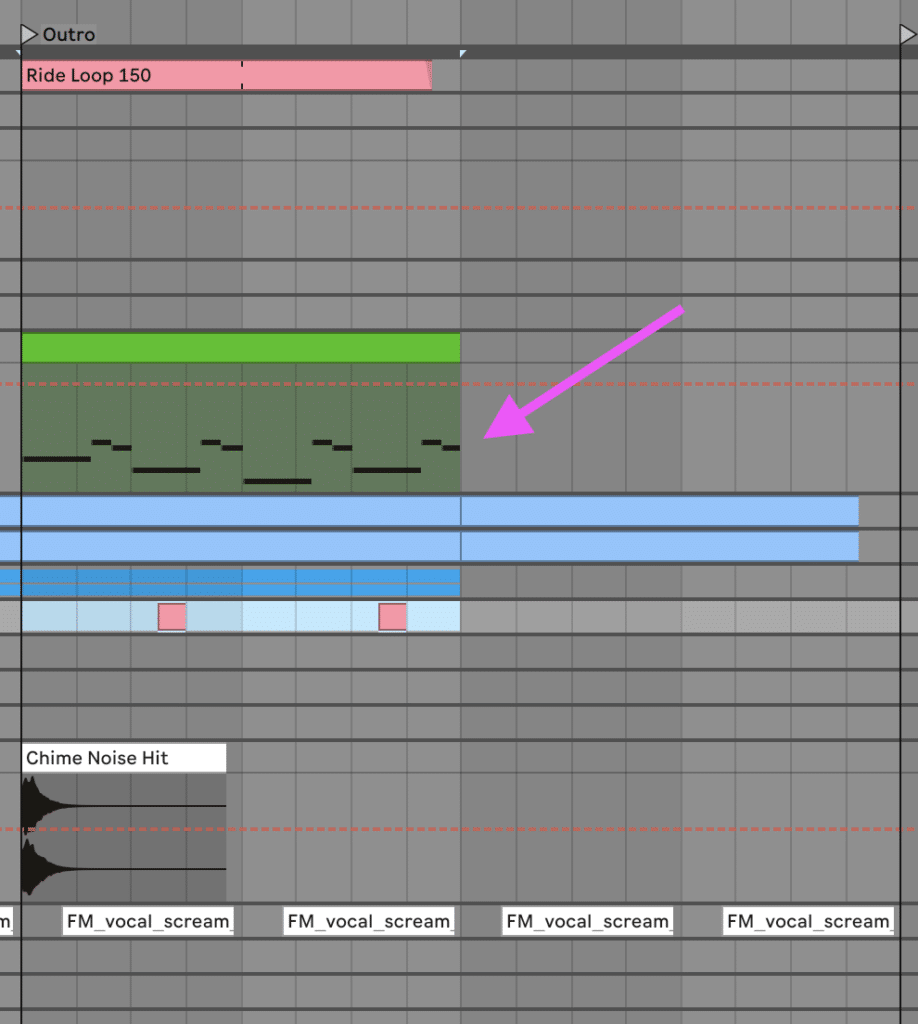
Now the outro should be sounding like this!
Now we can see our trap song has a proper structure with a different energy level for each section. Congratulations if you have made it this far, because we are nearly there.
All we have left to do is add a few more 'magic moments' and give it a final mix and master.
Get the headstart you need in music production with our Trap Starter Kit
- Have the best synth sounds on hand with high-quality Serum presets
- Craft drums effortlessly with 50+ trap drums and FX samples
- Get all the info from this guide in a one-page trap production cheat sheet
Step 6: Magic Moments
To keep trap music interesting, it's important to create 'magic moments'.
It's easiest to add them once you've got a full arrangement, as you hear where you might start to lose interest.
We've already incidentally created some (such as the pitch sweep on the main lead). But let's add a few more, starting with a tom fill.
Tom Fills
Toms are a classic drum sound to include right before the drop, as they sound huge and energetic.
Simply drag the Tom Fill sample onto a new audio track, and place it one beat before the drop.
Make sure it's warped in time on the Beats warping mode and shortened so it ends on the drop:
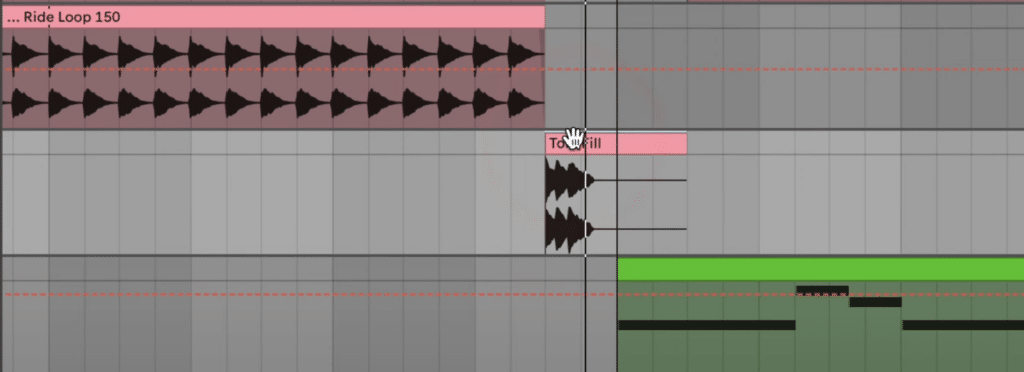
These first 3 hits lead quite nicely into the drop, but let's shorten them with the following transients settings:
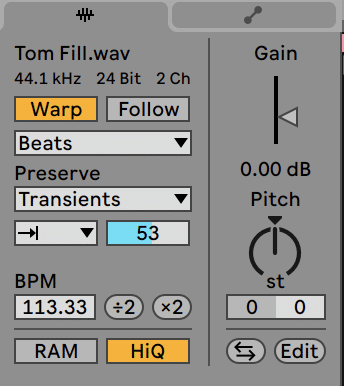
The result should sound like this!
This creates a smooth transition into the drop, moving the energy quite naturally. Now we can copy the tom fill so it comes into a 2 bar gap before the build.
This time, use the first part of the tom fill sample instead of the last part. Then, offset the timing slightly (as pictured below).

You don't have to be as tight with the transients, but this fill is more 'relaxed' than the one right before the drop.
Speaking of gaps, we can create one in the middle of the drop, allowing the keys hit to shine through. Remove 2 bars before and after the beginning of the 2nd half of the drop.
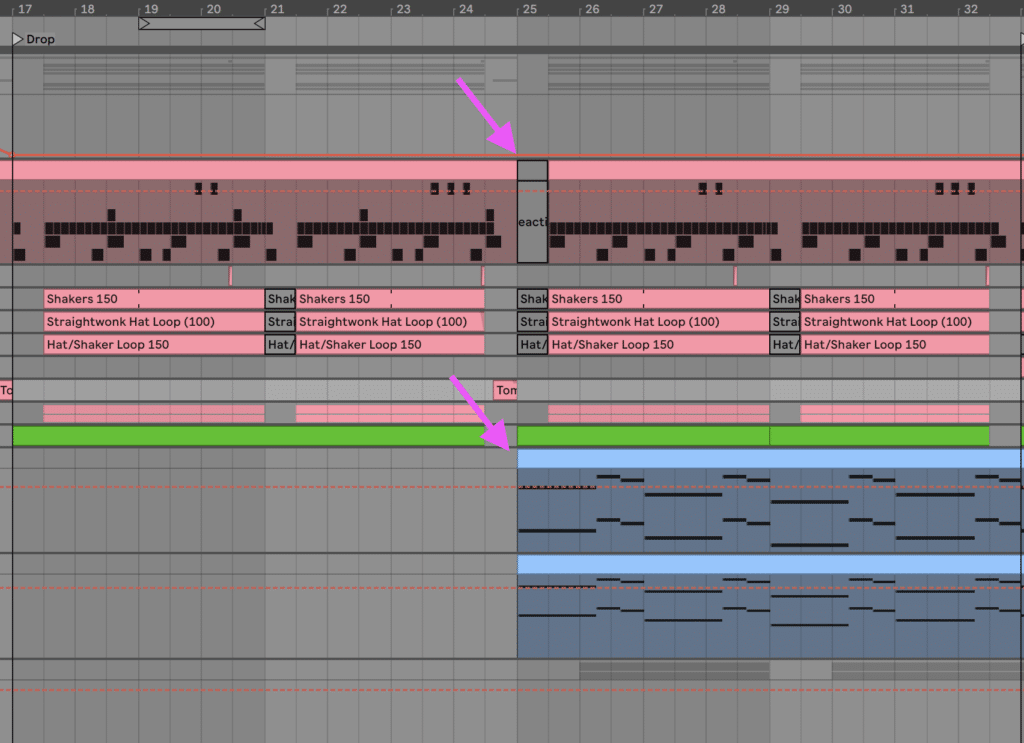
This simple technique gives listeners a payoff for sticking around.
808 Octaving & Variations
Another nice technique is to transpose the 808s up an octave for certain hits. Let's do this towards the end of the drop section, where there has already been a gap left.
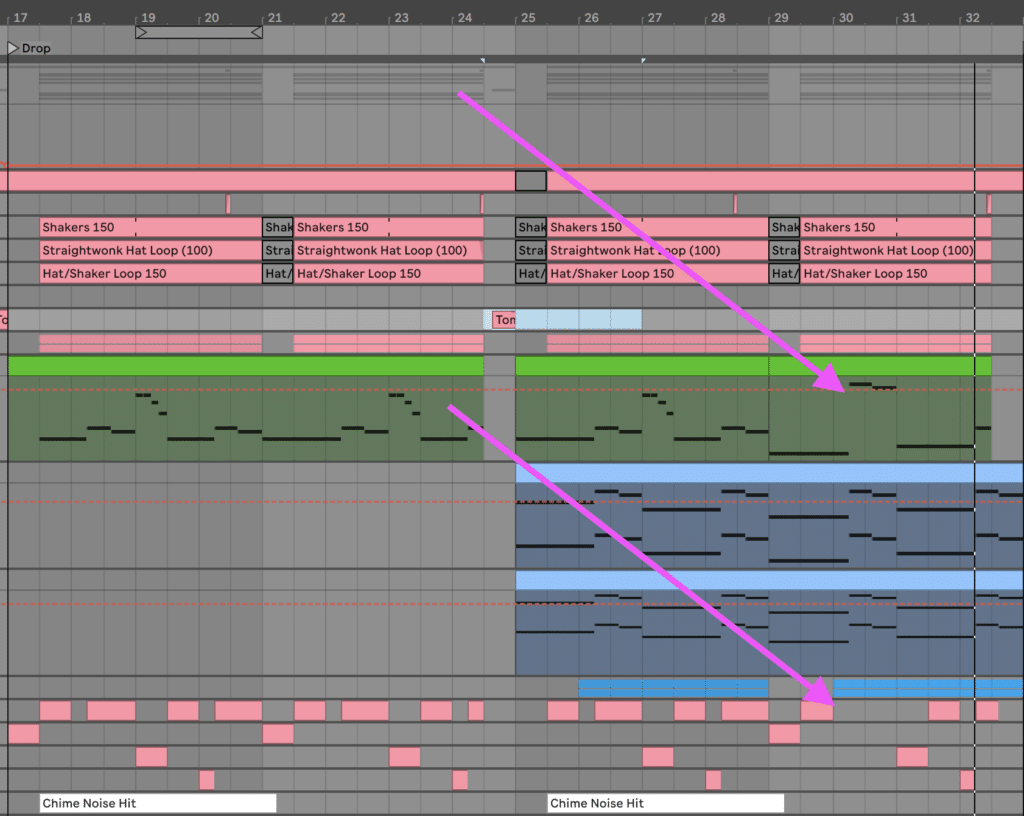
Let's do something similar mimicking the rhythm of the Deth Reese notes.
Go into the 808 MIDI pattern and program 2 F# notes up the octave from the rest of the bassline, followed by an E and a C#. Copy these over to other instances where the Deth Reese sound is present.
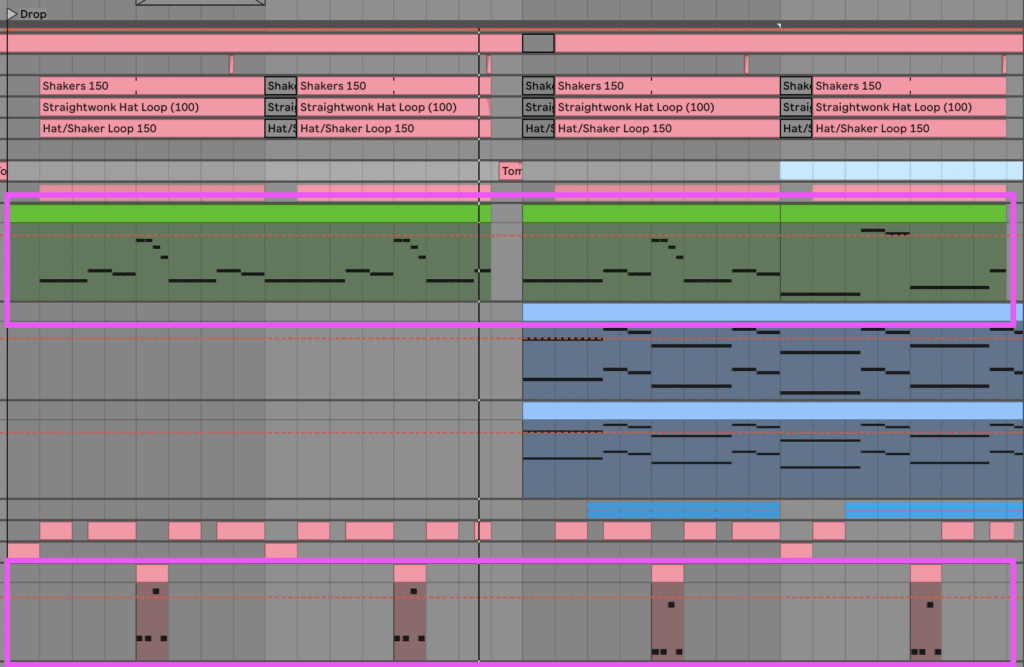
Make The Growl Shine
Lastly, emphasize the first growl by removing the 808 on the first 2 beats of the bar. This will allow that growl to take front and center right when the drop hits.
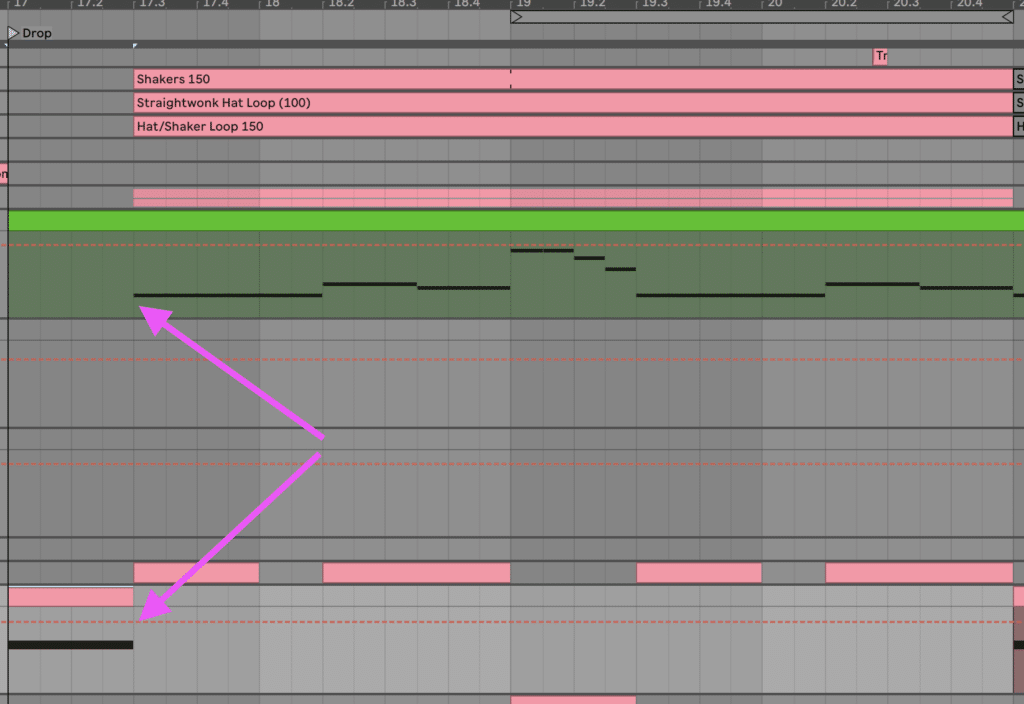
Now our track has that extra level of detail added, making it feel more professional and finished. Let's end with the mixdown.
Get the headstart you need in music production with our Trap Starter Kit
- Have the best synth sounds on hand with high-quality Serum presets
- Craft drums effortlessly with 50+ trap drums and FX samples
- Get all the info from this guide in a one-page trap production cheat sheet
Step 7: Final Polishes
When learning how to make trap music, most producers neglect both mixing and mastering. But it's important that your beats come across in the best light.
At this point, the last tasks to perform are:
- Balacning levels
- Adding EQ
- Controlling the stereo image
- Limitng and mastering
Because mixing could go on forever, I'm not going to dive into the detailed level for each channel. But you will want to spend a bit of time adjusting the fader volumes of each track.
If you want to learn how I approach mixdowns, check out this article on 'thinking like a compressor'.
Stereo Imaging
To help the drums sound fatter, I've used stereo imaging via a send. I use the iZotope Ozone Imager 2 plugin with some other FX to sprinkle in some side information.
This is only blended in a little bit, otherwise it will ruin your drum mix.
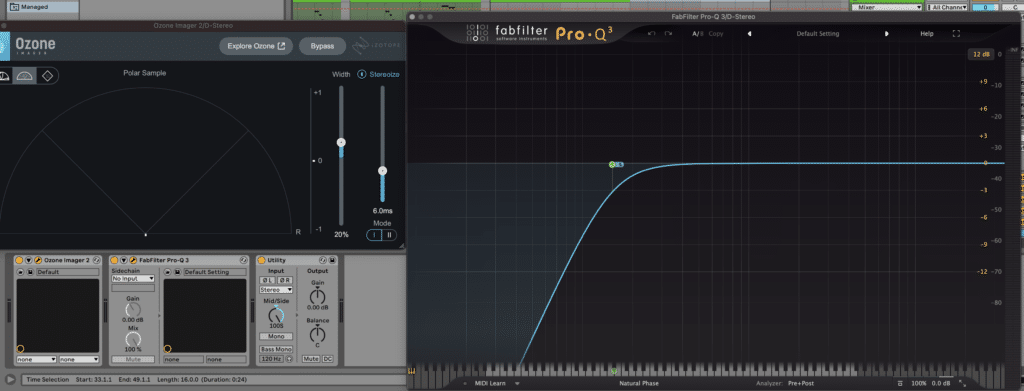
Trap Lead Fattening
To give the lead more presence, I've also given it a boost in the midrange at about 1.4kHz:
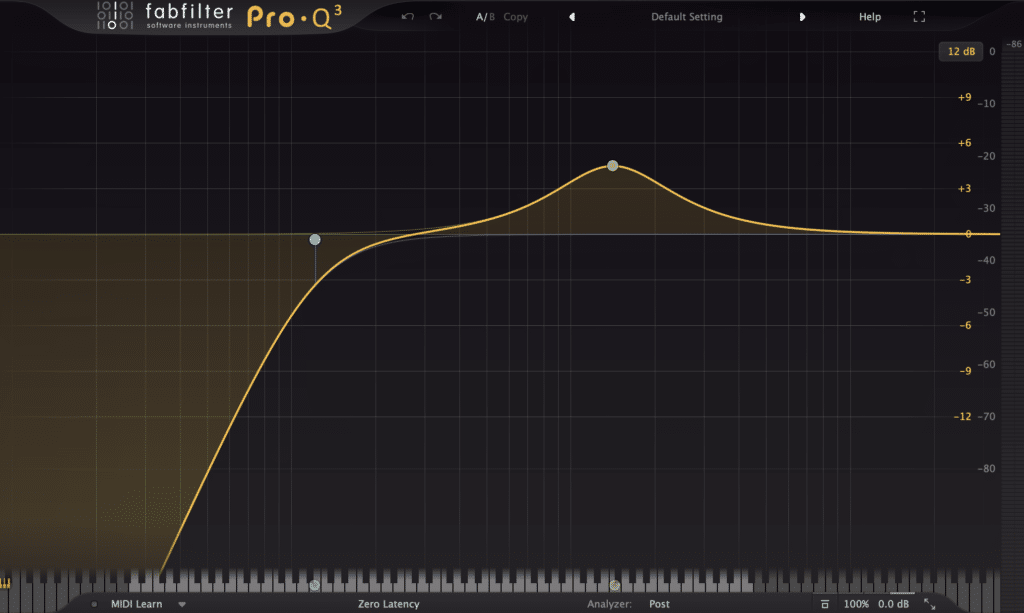
Plus added some chorusing and saturation to give it more of an 'edge':

Here's a before and after of the processing – it sounds way more present and huge:
You may need to bring the fader volume down to compensate.
Subtle Panning
I've also panned the Shaker Loop 150 and Straightwonk Hat Loop 5L and 5R to give it a bit of stereo separation:

Mastering & Limiting
Lastly, check how your mix sounds with some loudness by using a limiter. I'm using the FabFilter Pro-L 2 plugin on the Modern setting and boosting the gain to taste.
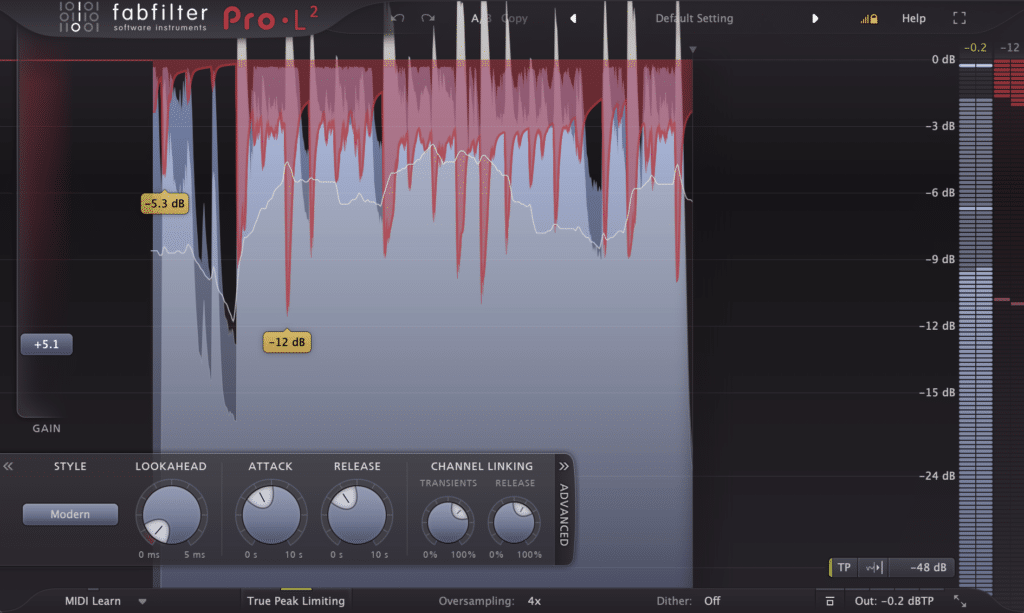
If your mix sounds weird at this stage, you may need to go back and spend more time balancing the levels.
But here's the final result!
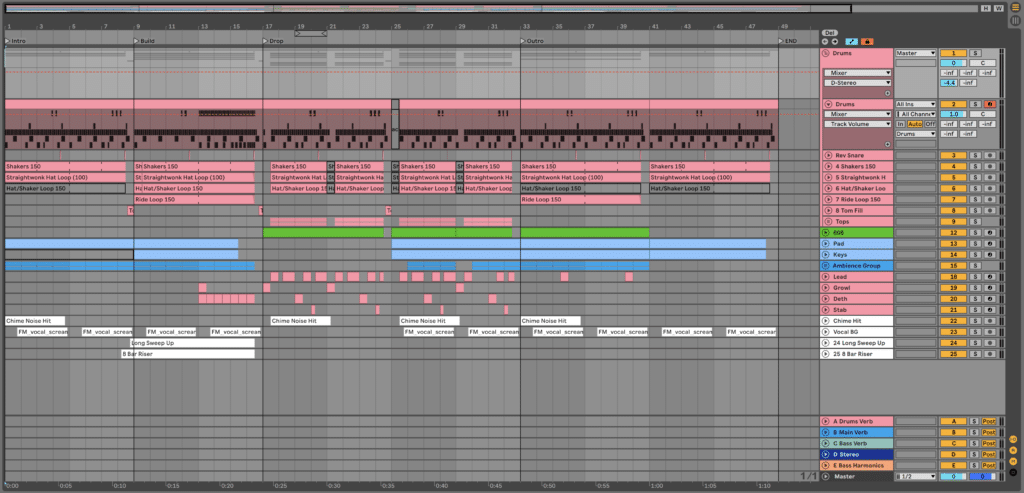
Now it's your turn – grab the samples from the Trap Starter Kit below and get producing your own music:
Get the headstart you need in music production with our Trap Starter Kit
- Have the best synth sounds on hand with high-quality Serum presets
- Craft drums effortlessly with 50+ trap drums and FX samples
- Get all the info from this guide in a one-page trap production cheat sheet
What's Next?
That's it! I hope you learned a lot about how to make trap music with this guide.
Even if it's just a new technique or two – make sure you apply what you learned today in your DAW.
If you have any suggestions for how this guide can be improved, flick me an email at [email protected].
martinezthistil1996.blogspot.com
Source: https://www.edmprod.com/how-to-make-trap-music/
0 Response to "Funny How to Make a Trap Hip Hop Beat"
Post a Comment